It is no exaggeration to say that we at Hangar Thirteen have been blessed. I have never been much for emotional platitudes, but I must admit that this donation absolutely floored us.
Ray and I received a text message on 14 April from Gar Hendry of Millcreek, Utah. Gar was cleaning out his dad’s basement and came across two bolts of aircraft insulation. His dad, Grant Hendry, was a US Navy veteran, joining on 2 June 1943 and serving as an aircraft mechanic throughout the Second World War and Korea. Looking up the insulation online, Gar found us, and asked if it was something that we would be interested in.
This insulation was instantly recognizable to us. This material was called Skyfelt-Kwilko and does not exist on any surviving B-17 at this time. To say that this material is rare would be an understatement.
The Boeing B-17 used a three-part combination of cotton, kapok, and animal hair to form a batting which was used to insulate the nose, cockpit, and radio compartments. The nose and radio compartments were left bare in the G series, but all B-17s left the factory with insulated cockpits. Most of the batting was tube-stitched, but the nose compartment, with its stronger curves, required diamond stitching.
Typically, this insulation was glued to the skin, being installed much like one would insulate a house: Insulation was installed between each rib and then another layer was laid across the ribs under an outer ‘blanket’ to form a wall, snapping into place.
However, because F-model B-17s were so heavily altered in the nose compartment (nose and cheek guns, for example), it was not uncommon for the outer layer of fabric to be removed forward of Station 2 (the halfway point in the nose), revealing the diamond insulation beneath.
Replacing the original insulation and batting was one of the loftier goals we set forth for Lucky Thirteen. There are modern variants of this insulation, but they use synthetic materials and are stitched in inaccurate patterns. The Hendry family’s donation has given us a HUGE step forward in accomplishing our goal of ultimate accuracy.
I should stress that this insulation was only used in the nose compartment. The more common tube-stitched insulation (which varied in thickness depending where it was installed) and the outer fabric still remain as future projects.
Gar also sent along some gifts for the Hangar Thirteen volunteers (deeply appreciated) as well as one other donation: a NOS M-357-A Gibson Girl Emergency Transmitter Kite.
This Gibson Girl emergency transmitter operated like a butter churn, the user sticking the radio between his legs and turning a hand crank to transmit a distress signal. Depending on the weather, a hydrogen balloon or a kite could be used to spool out the antenna for a stronger signal. The kite was standard issue on older Gibson Girl sets – like those on Lucky Thirteen – being kept in a tube-shaped accessory bag called the BG-109-A.
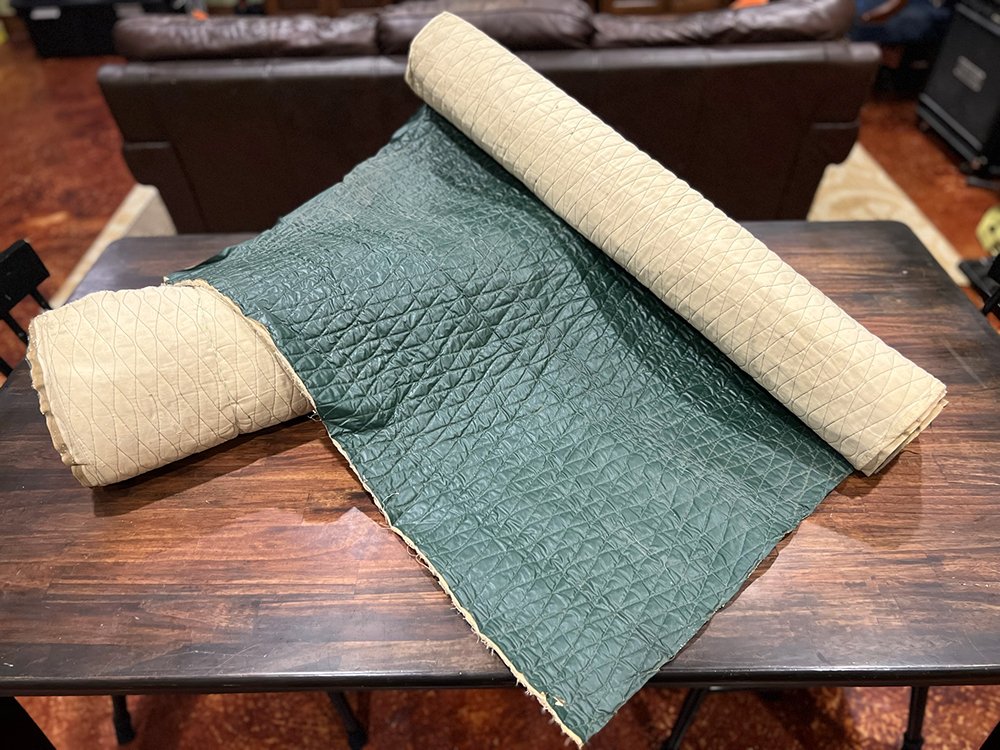
The newly arrived bolts of B-17F nose insulation.
The smaller bolt is one yard wide and 3.5 yards long. The larger bolt, is two yards wide and has never been opened.
Photo taken 28 June 2022.
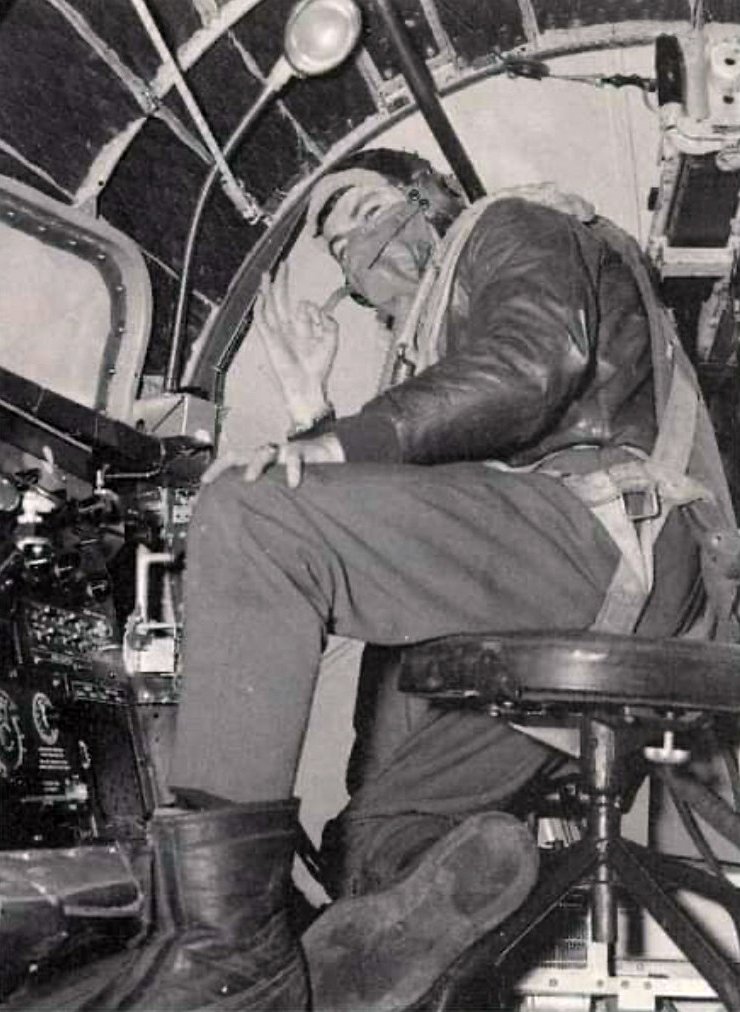
The Kwilko insulation is visible in the nose of this late F-model B-17.
The nose compartment to Lucky Thirteen was identical to what you see here.
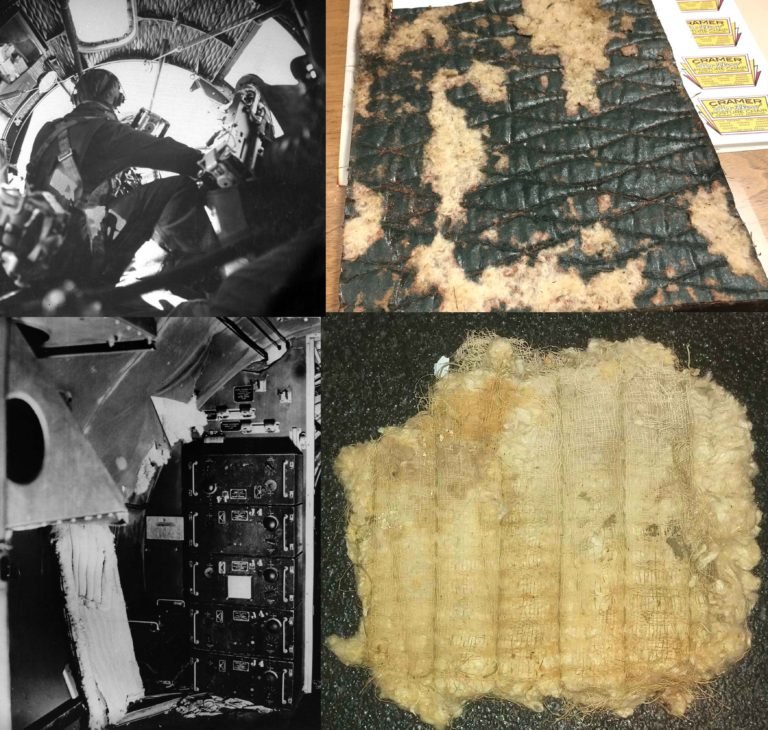
A reference photo showing both the diamond and tube-stitched insulation.
The top left photo was taken on 6 September 1943 – the day Lucky Thirteen was shot down – aboard Winning Run (42-29944, 303BG).
The original sample to the right was the largest piece we had ever seen before now. It was found during the restoration of Memphis Belle (41-24485, 91BG).
Speaking of Memphis Belle, the bottom left photo is of her radio compartment. You can see one of the wall blankets is coming off, revealing the tube-stitched batting underneath.
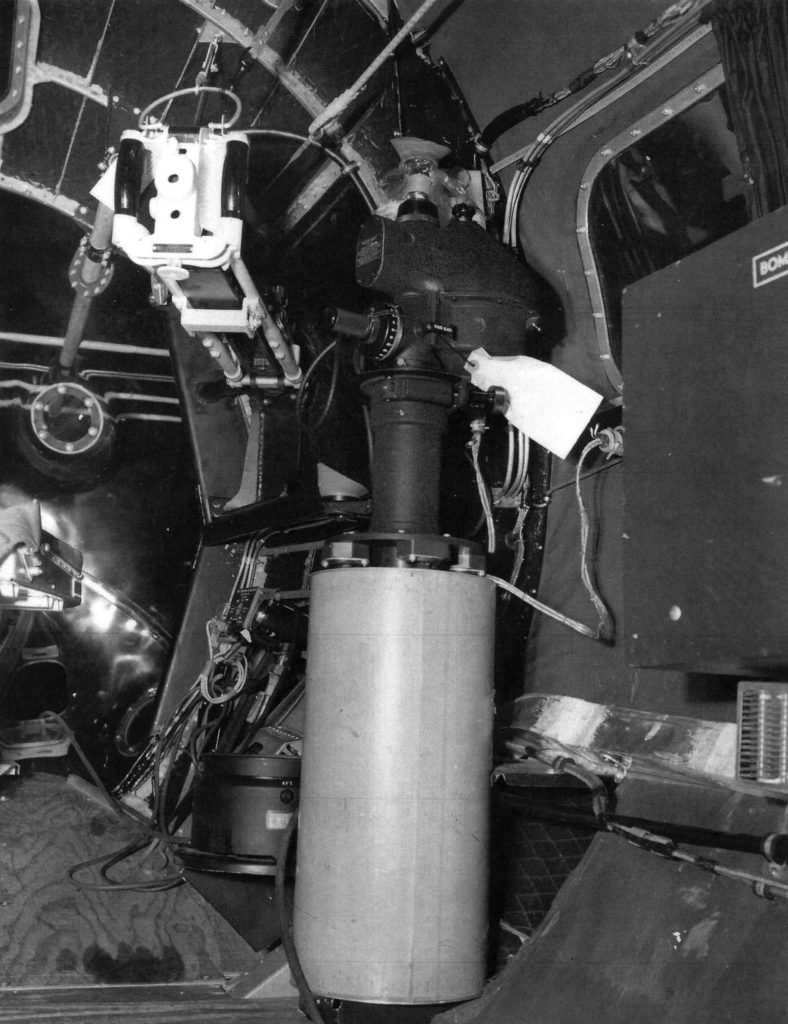
The nose compartment of an early F-model B-17. Note how the outer blankets have been removed forward of Station 2, so as to make modifications easier.
Note the B-3 Drift Meter. This was quickly removed and replaced by the B-5 Drift Recorder. On Memphis Belle, the B-5 was installed on the left wall and the navigator’s table moved to the right, on top of the storage box you see here.
The hole where the B-3 was originally installed is still visible.
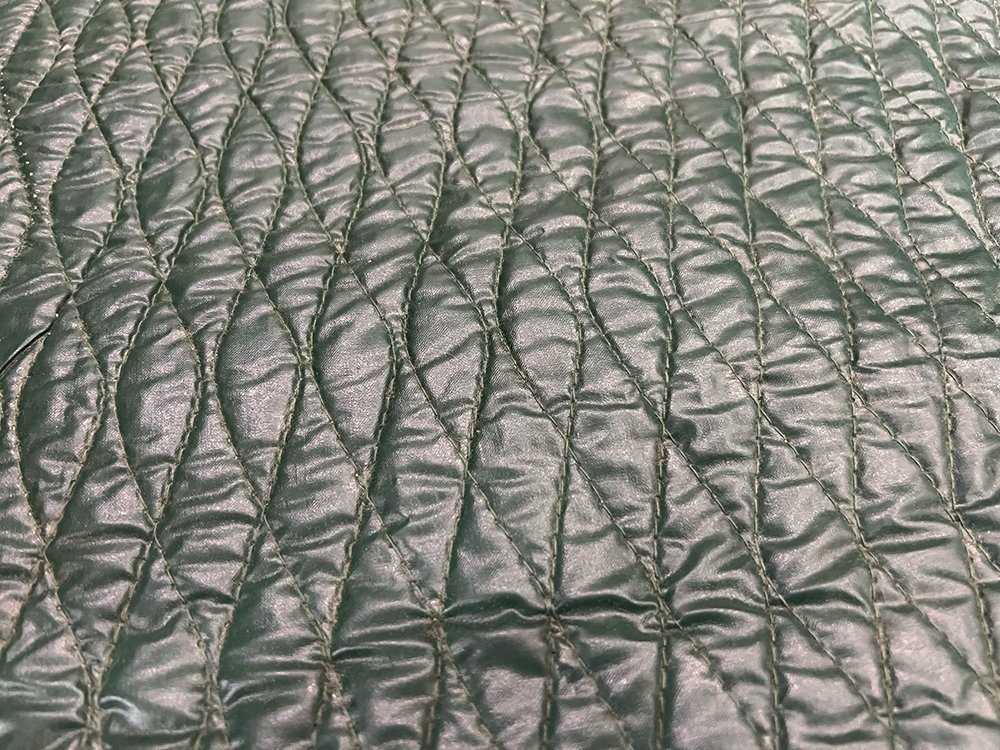
A close-up of the Kwilko batting’s loose diamond stitching.
Photo taken 28 June 2022.

A piece of interior fabric removed from Preston’s Pride (44-85738), sent to us by our friend Greg Stathatos.
The fabric below is there to show that the B-17’s interior fabric was NOT canvas nor was it Olive Drab. In fact, it was a bronze green colored light cotton.

Our friend Greg Stathatos in the cockpit of B-17G Preston’s Pride (44-85738) in Tulare, California.
Preston’s Pride is the only B-17 which still has her original insulation and fabric, which as you can see, is in her cockpit.
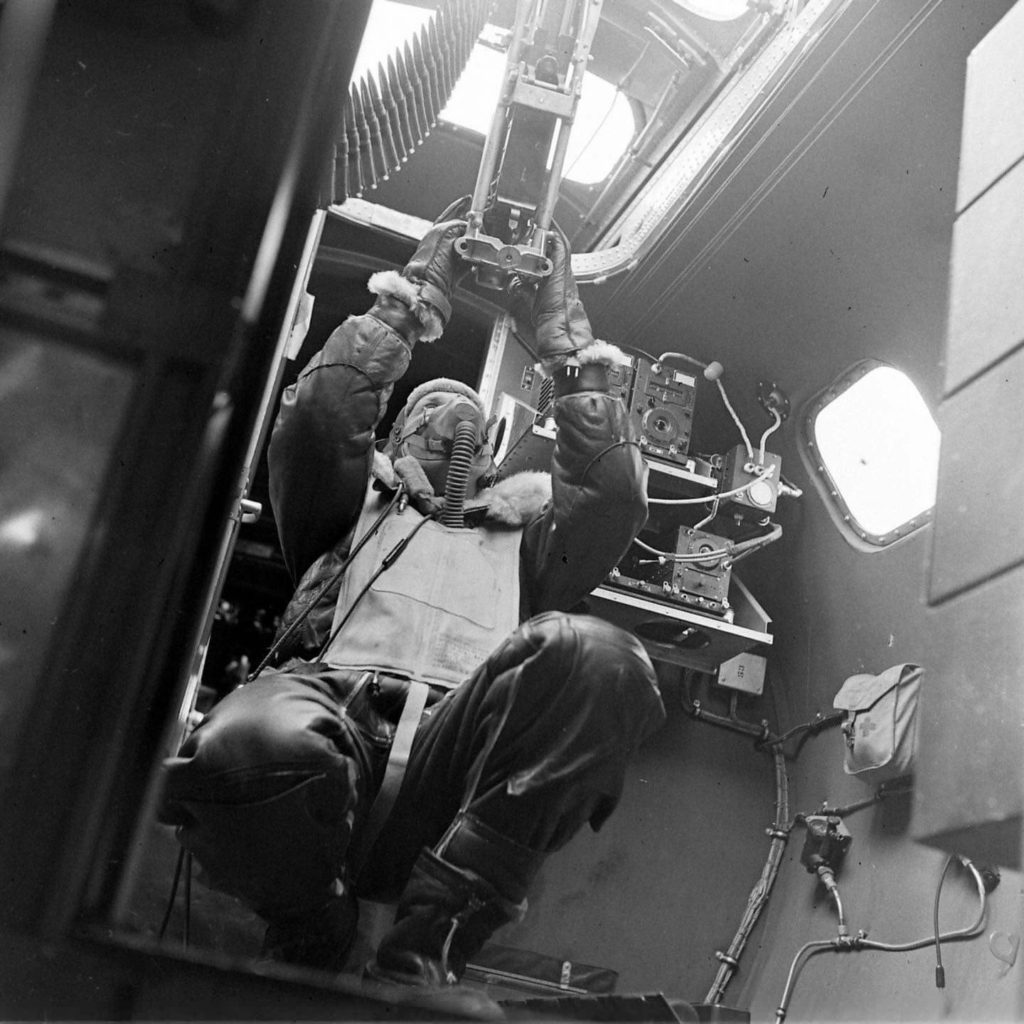
The radio compartment of an F-model B-17. Note the smooth walls created by the insulation and fabric.
This photo is staged. The demand-flow oxygen mask the airman is wearing is not correct for the constant-flow system installed on this airplane.
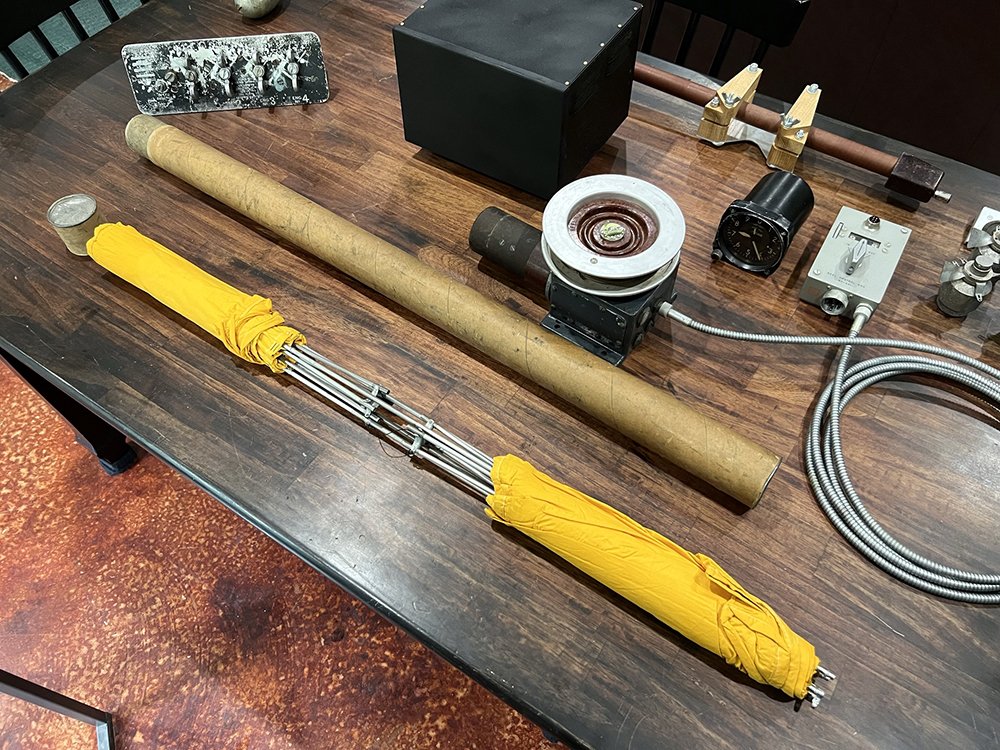
The M-357-A Gibson Girl Kite along with its storage tube.
Other items on the table include various current projects, such as the RL-42 Reel Antenna and the Autopilot Amplifier.
Photo taken 28 June 2022.

The M-357-A Kite fully extended beside its storage tube.
Photo taken 28 June 2022.
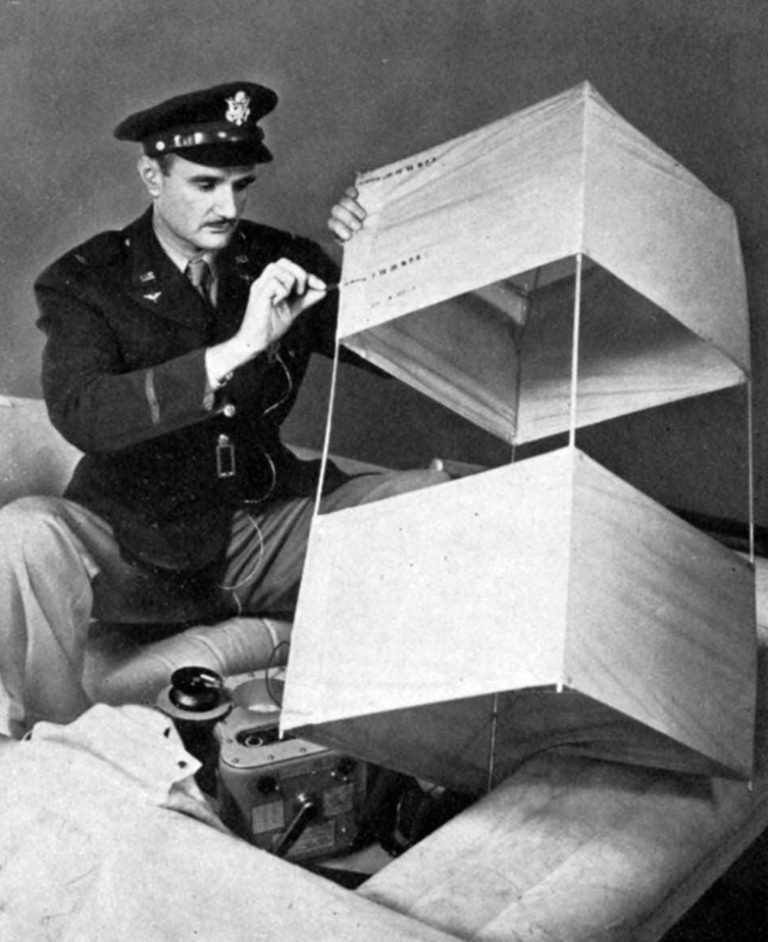

Manual photos of the M-357-A Kite in use.
Turning the handcrank powers the transmitter, sending a distress call through the spooled antenna.
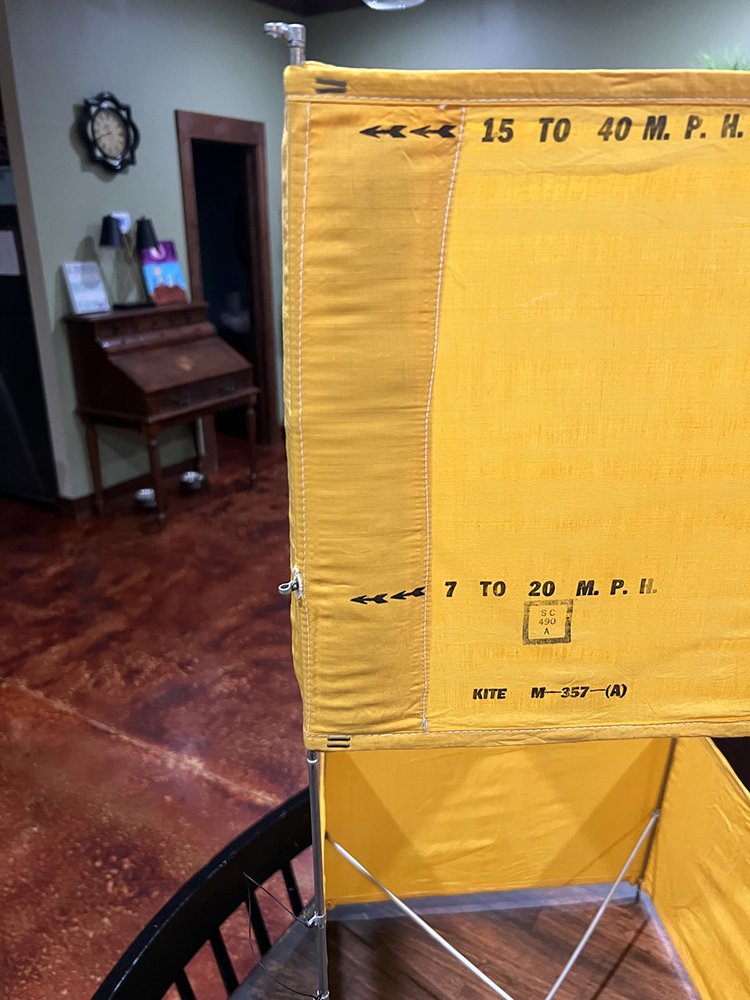
Close-up of the M-357-A Kite.
Photo taken 28 June 2022.
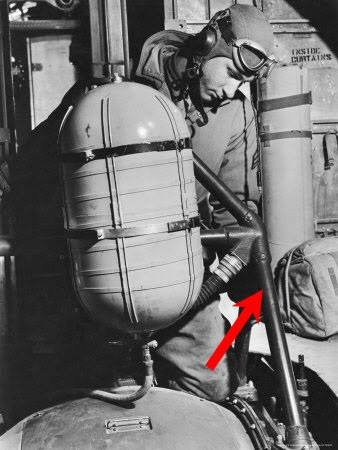
SSGT James M. Abbott, 97BG, adjusts the F-1 oxygen bottle that feeds his aircraft’s ball turret.
The two Type A Gibson Girl bags are highlighted with a red arrow. We are still in need of the tall, tube-shaped bag (the BG-109) which holds the Gibson Girl’s accessories.
Having covered how Ray oversaw the arrival of the new tail stinger for Lucky Thirteen, I thought I might share what I did over Memorial Day weekend – I hung out with our friends from Texas Raiders.
As I am sure most of you know, Texas Raiders (44-83872) is the Boeing B-17G with the Commemorative Air Force’s Gulf Coast Wing. They are some of the most awesome people out there in the warbird community and have long been great friends to Hangar Thirteen. Since they were going to be in Savannah, I thought I’d drive down and visit. (Seems like we’re three hours from everywhere.) While the rest of the crew watched over the airplane, Kevin Michels, Howard Quoyeser, Dan Ragan, and myself (along with my father-in-law, Mr. Dave), walked around the National Museum of the Mighty Eighth Air Force.
At 88 years young, Dan has the unique distinction of serving aboard Texas Raiders when she was in military service! For those who do not recall my article on B-17 Oddballs, Texas Raiders is a US Navy veteran, serving during the Korean War as a PB-1W with VW-1. PB-1Ws were the product of Project CADILLAC II, an attempt to extend the reach of radar screens in the wake of 1945’s vicious kamikaze attacks. Since the TBM Avengers of CADILLAC I lacked range, the B-17 proved a natural replacement, not only carrying the massive APS-20 radar, but also serving as an airborne Combat Information Center (CIC) – the first true AWACS platform.
After visiting the museum, the guys were kind enough to take Mr. Dave and I out to the airfield for a quick walkthrough. Deeply appreciated! One day you guys are going to have to come by Asheville. And when you do, we’ll have to plan to have a big barbeque.
Check out the photo descriptions for more about the visit.
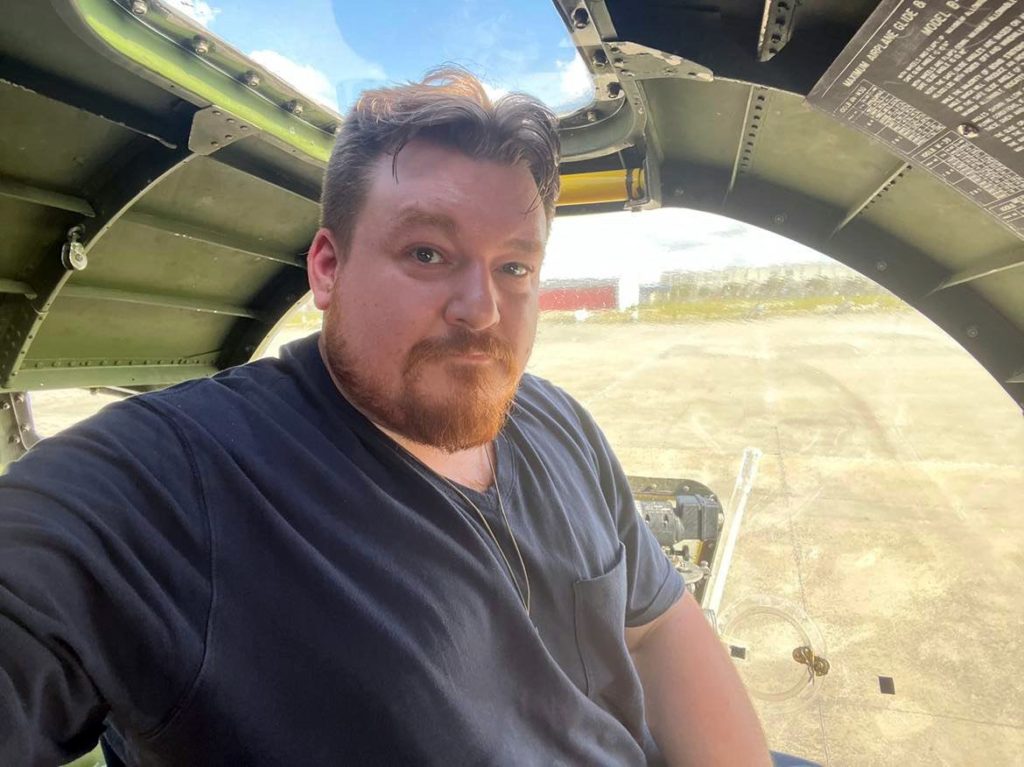
Obligatory selfie sitting in the bombardier’s position aboard Texas Raiders. It was extremely hot that day, but then again, when it comes to South Carolina and Georgia – it’s not the heat, it’s the humidity.
The building across the tarmac is one of several belonging to Gulfstream Aerospace, who are headquartered in Savannah.
Photo taken 25 May 2022.
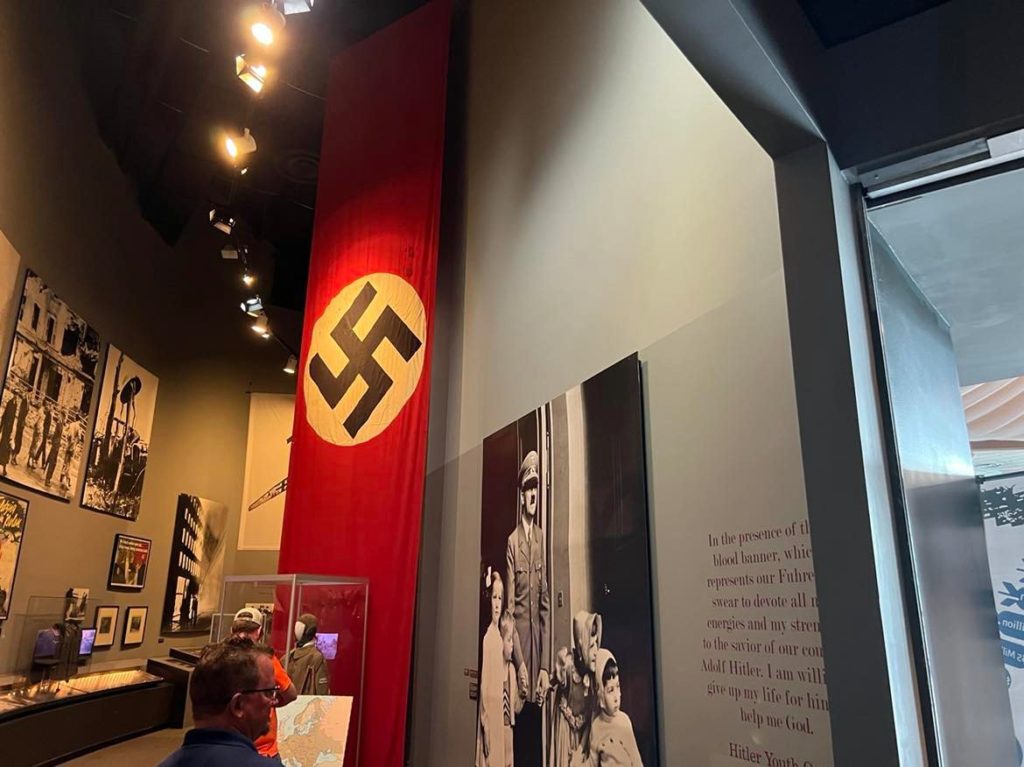
A display from the National Museum of the Mighty Eighth Air Force.
A smaller variant of this banner is on display in our hangar. It was liberated from Stuttgart, the city against which Lucky Thirteen flew her final mission.
Photo taken 25 May 2022.

The National Museum of the Mighty Eighth Air Force hosted a special program over Memorial Day weekend, setting up flags for each of the 26,000 US 8AF KIA throughout their memorial garden.
This memorial is an exact replica of the 384BG’s memorial at Grafton Underwood. The 384BG is the unit with which Lucky Thirteen served.
Photo taken 25 May 2022.
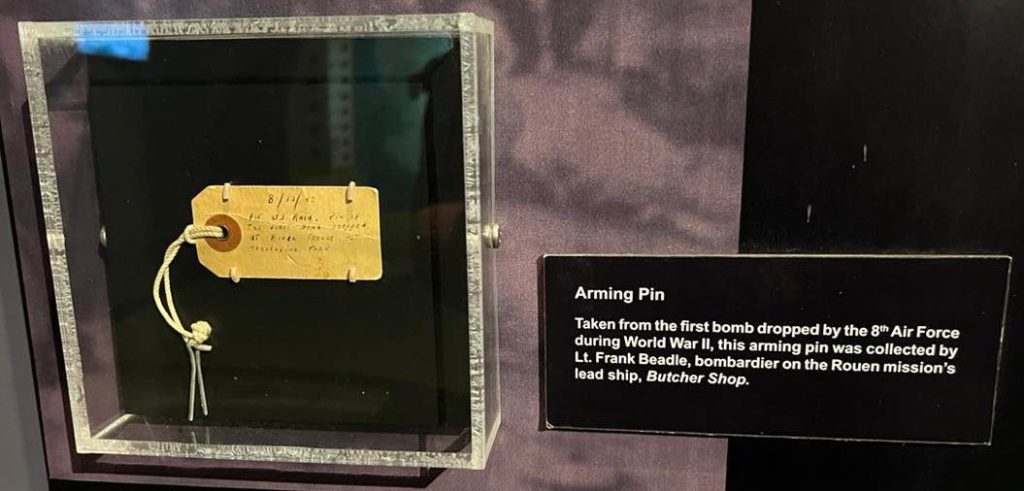
Sometimes the rarest exhibits are the easiest to miss.
An arming pin taken from the US 8AF’s very first airstrike: the railyards of Sotteville-lès-Rouen, France on 17 August 1942.
The lead aircraft, Butcher Shop (41-2578, 97BG), was flown by CO 97BG COL Frank A. Armstrong, Jr. and CO 340BS MAJ Paul W. Tibbets, Jr – major figures in airpower history.
Photo taken 25 May 2022.
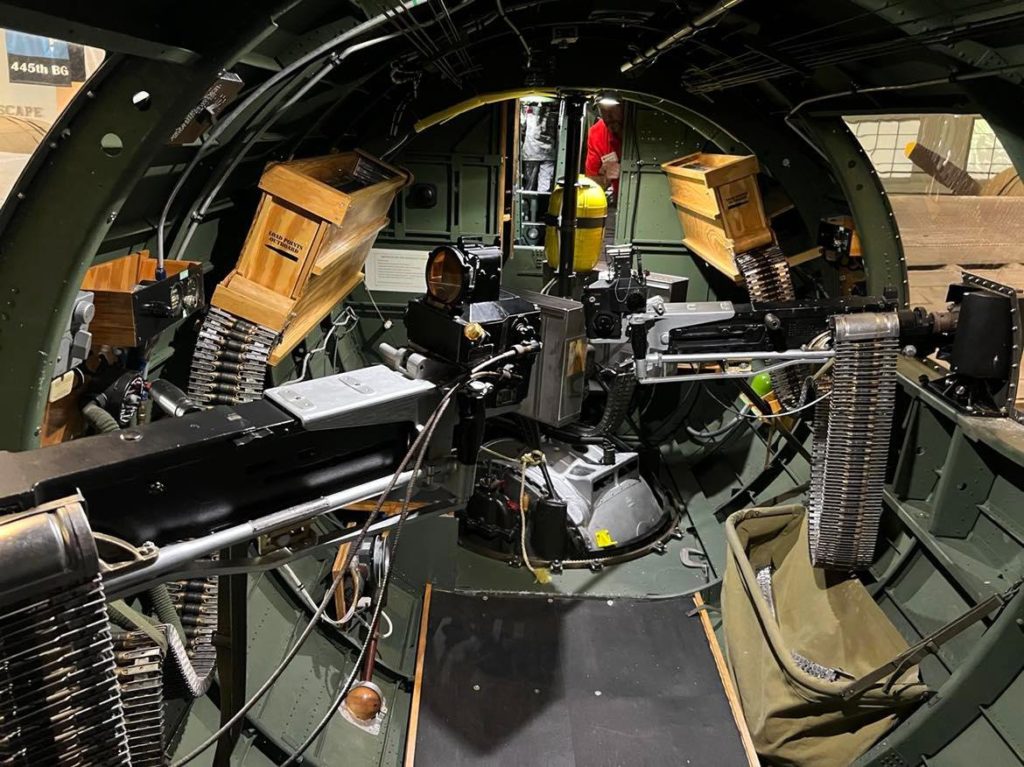
The waist compartment of City of Savannah (44-83814) at the National Museum of the Mighty Eighth Air Force.
The external ammunition cans on the ball turret, while not accurate to the B-17, are the same ones from the 1990 film Memphis Belle.
Incidentally, that film came out on my birthday: 12 October. Explains a lot.
Photo taken 25 May 2022.
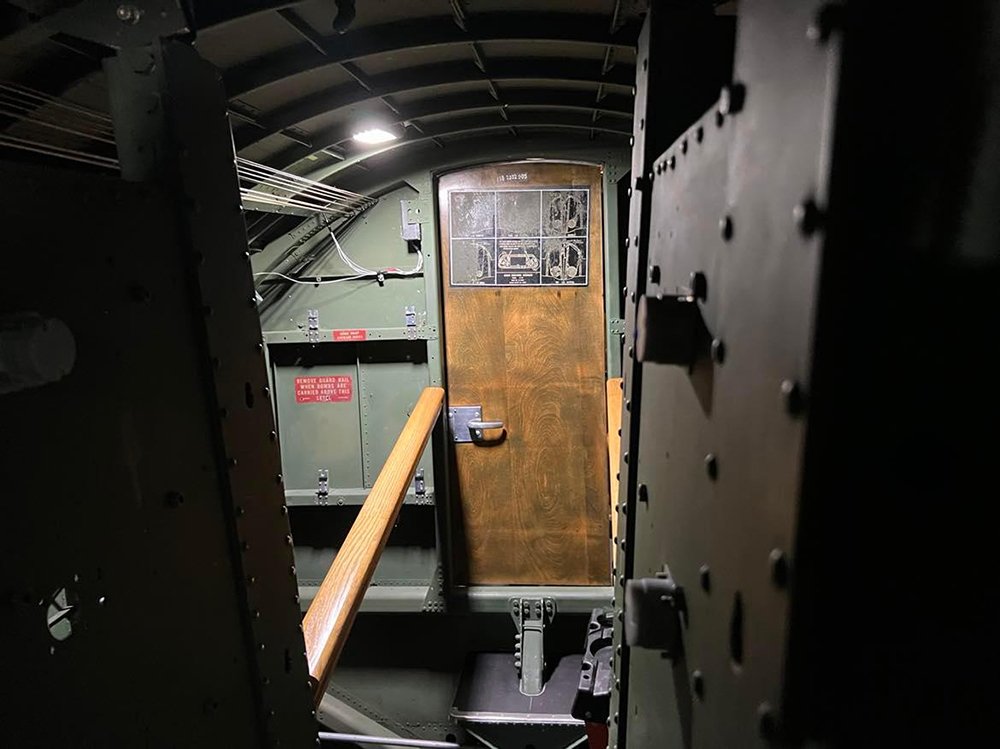
Looking back toward Station 5, across the bomb bay from Station 4, aboard City of Savannah (44-83814) at the National Museum of the Mighty Eighth Air Force.
The doors are original, as are their late-war style loading placards. The hooks to the left of the door are what hold the bomb hoist rack when stowed.
Photo taken 25 May 2022.
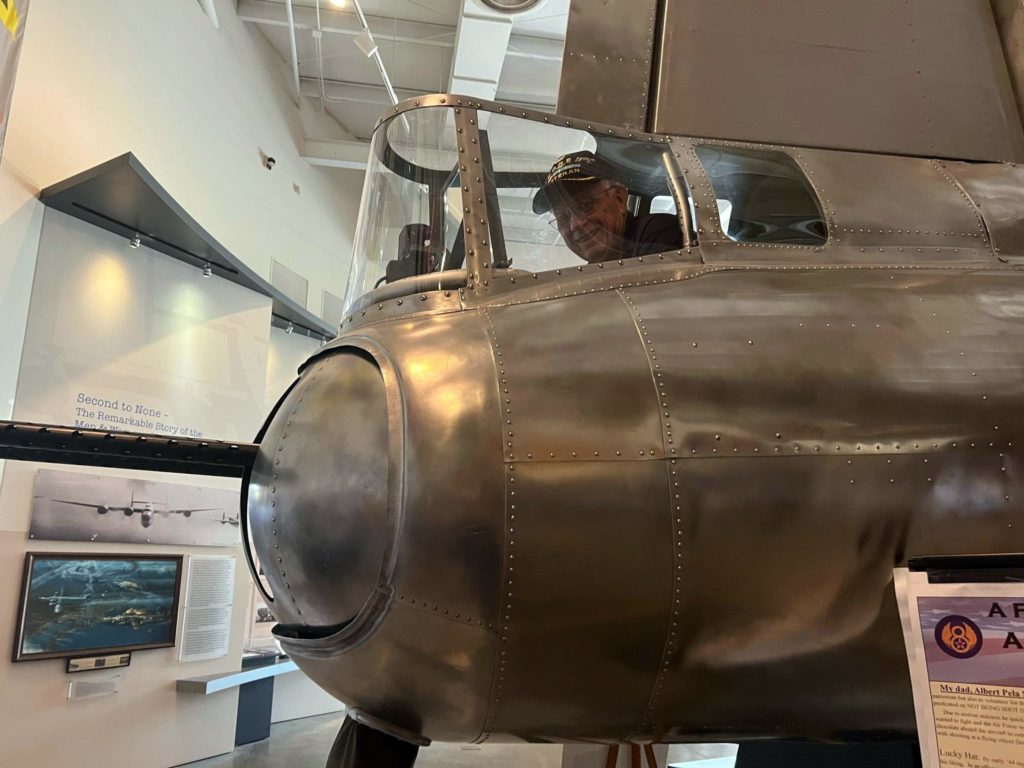
Dan Ragan climbs into the tail gun position aboard City of Savannah (44-83814) at the National Museum of the Mighty Eighth Air Force.
No easy feat!
Dan’s older brother also served aboard B-17s, seeing combat in the USAAF.
Photo taken 25 May 2022.

Dan Ragan (right) in front of a PB-1W at NAS Barbers Point (now Kalaeloa Airport in Hawaii).
The giant APS-20 radar can be seen under the aircraft. The PB-1W in the picture is not Texas Raiders, as her call number was 12.
Photo taken December 1954, around the time the PB-1 was being phased out in favor of converted Lockheed Constellations.
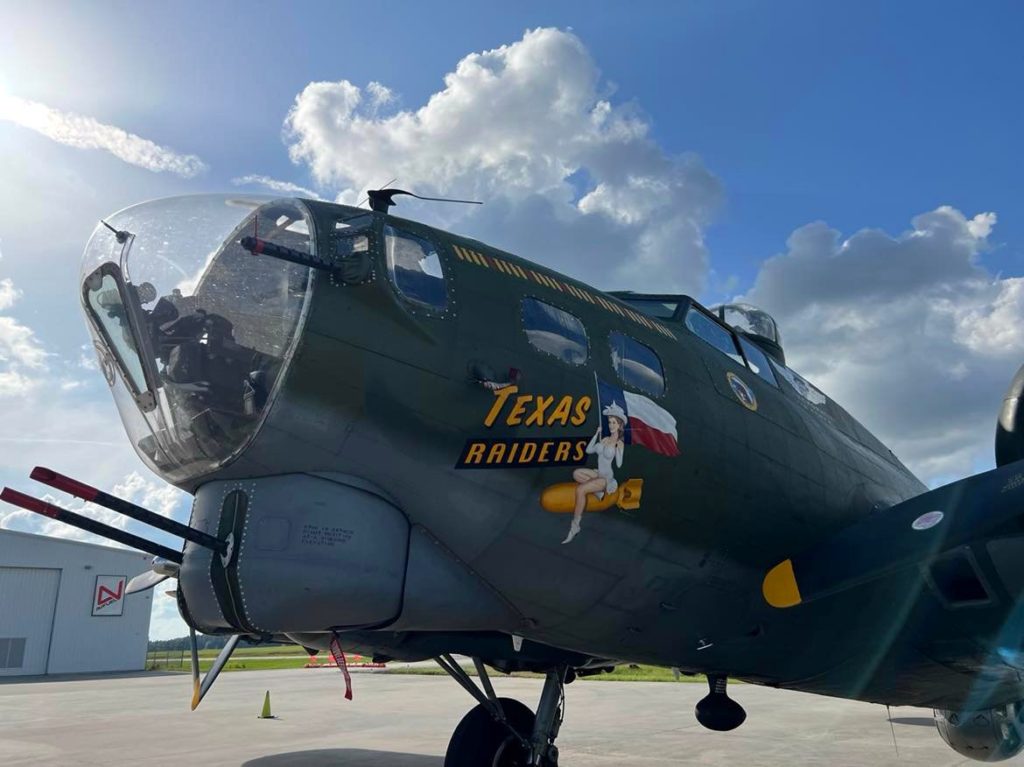
Beauty shot of Texas Raiders (44-83872).
Texas Raiders has the distinction of being the oldest B-17 on the flight circuit. She was acquired by the CAF in 1967.
Photo taken 25 May 2022.
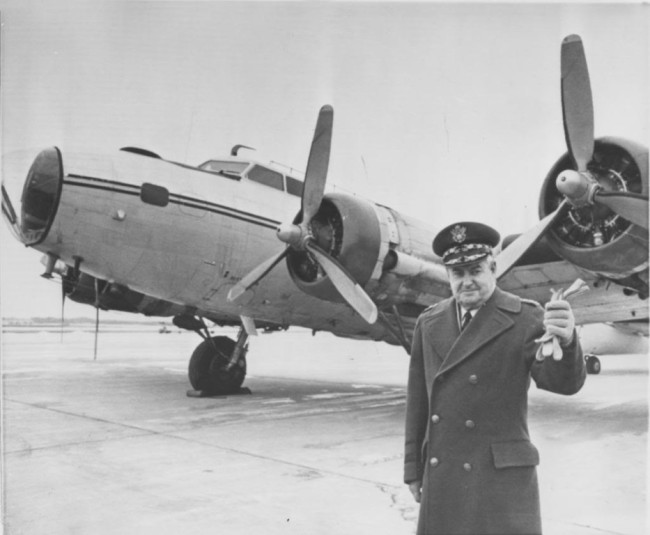
CSAF Gen Curtis E. LeMay poses with Texas Raiders, flown in specifically for the general’s retirement ceremony in 1965.
LeMay and his protégé, CG SAC Gen Tommy S. Power, were ushered into retirement for chafing against the policies of SecDef Robert S. McNamara (D-CA), Pres. Lyndon B. Johnson (D-TX), and Johnson’s predecessor, Pres. John F. Kennedy (D-MA). While the media portrayed LeMay and Powers as war-mongers, this was not actually the case. Rather, the two argued that a confident approach in dealing with the Soviet Union would be more successful than one of ‘flexible response.’ For many, the quagmire of Vietnam proved their point.

Kevin taught me something about R-1820 engines – how to easily differentiate between those made by Wright and those made by Studebaker. Wrights have black cylinders and Studebakers have gray cylinders.
Both Texas Raiders and City of Savannah have mixed sets.
Neither company enjoyed a good reputation during the war. Studebaker was never a brand associated with quality and, in a public relations fiasco, Curtiss-Wright was convicted of knowingly selling defective engines to the Army in 1943.
Photos taken 25 May 2022.
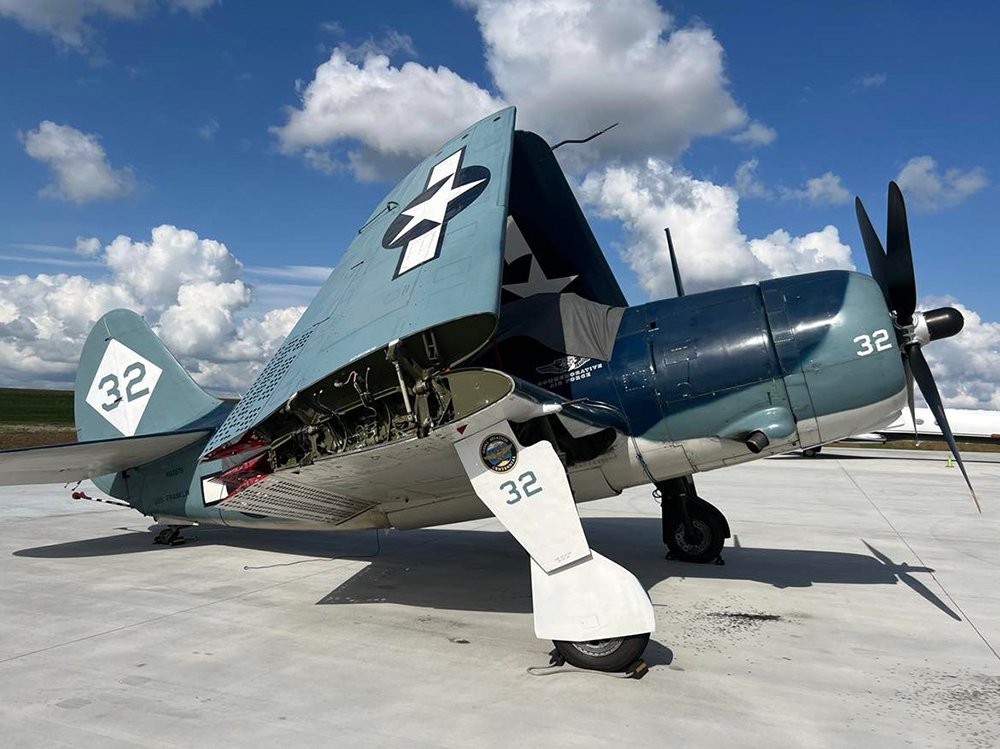
Accompanying Texas Raiders was SB2C-5 BuNo 83589 – the world’s sole surviving airworthy Helldiver II. While not particularly liked by its crews due to its poor handling, the Helldiver II carried a far heavier bombload than its predecessor.
The CAF guys call it “the Beast,” and one has to see her up-close in person to really appreciate her size.
Photo taken 25 May 2022.
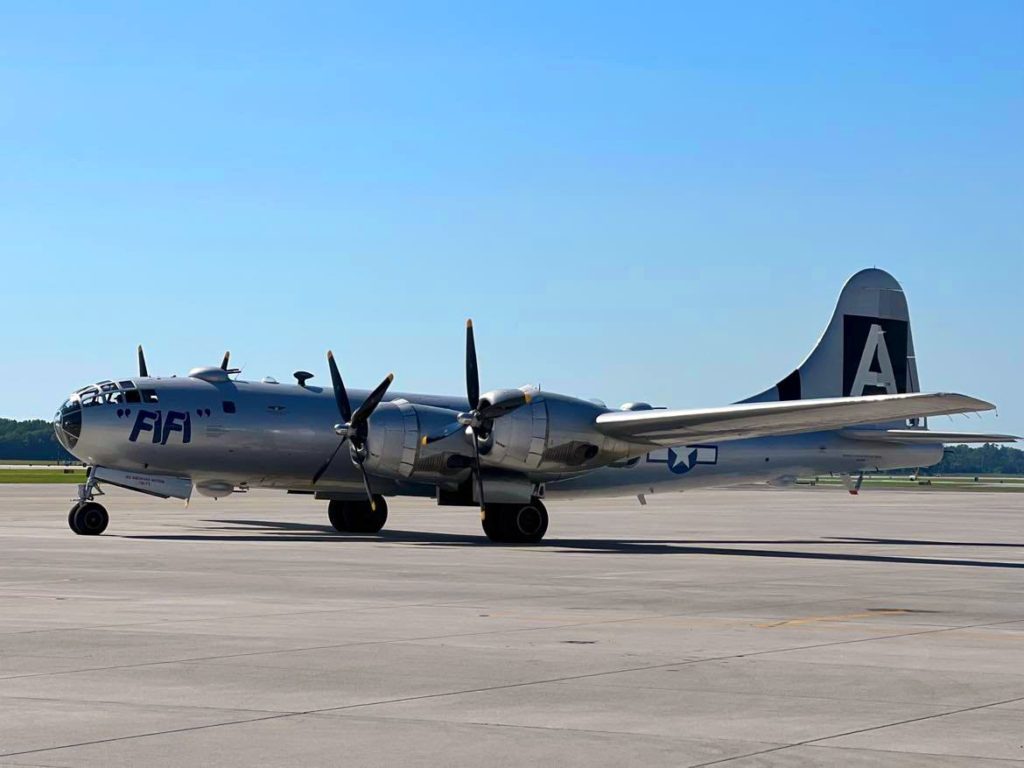
The same weekend that saw us visit the CAF’s Gulf Coast Wing in Savannah saw a trip to Augusta to visit the CAF’s AirPower Squadron.
Boeing B-29A Fifi (44-62070) is one of several surviving B-29s that were recovered from NAS China Lake, having seen use throughout the 1960s as missile targets.
Photo taken 27 May 2022.
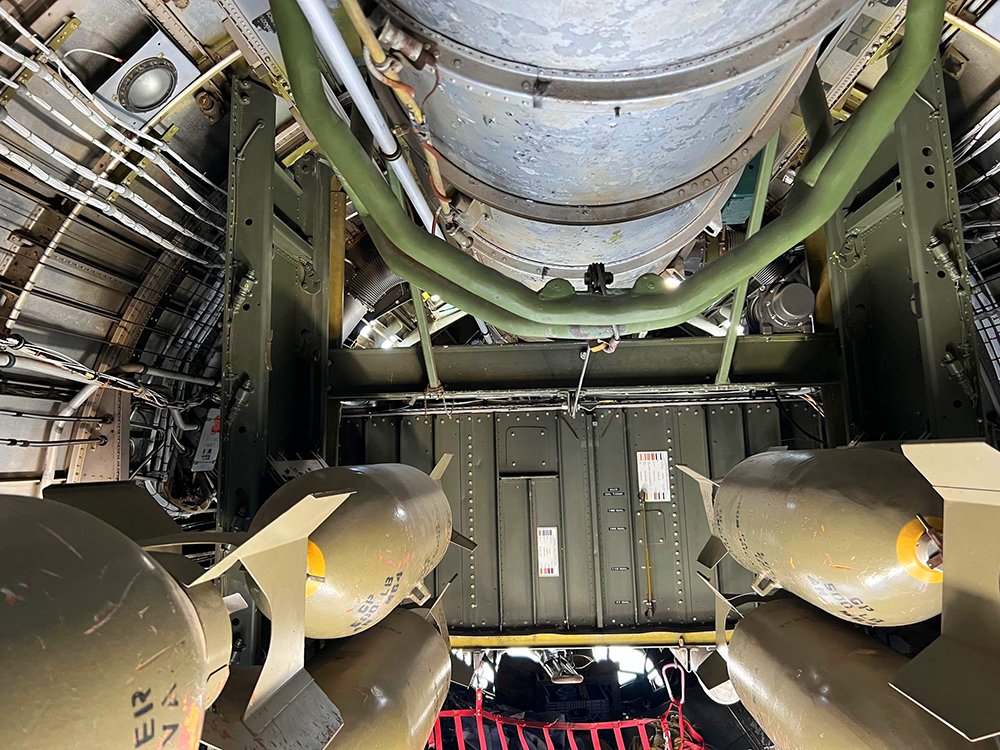
Looking back from the cockpit into the aft bomb bay aboard Fifi. The bomb bay of this aircraft has been surprisingly well preserved.
The large bulkhead center is actually a portion of the aircraft’s wingspar, separating the fore and aft bomb bays. While Fifi no longer carries these components, the aircraft’s oxygen supply and radar dome were mounted below this structure.
Photo taken 27 May 2022.
My friends, I told you we had big news coming. And here it is, just in time for Memorial Day:
Lucky Thirteen now has a tail gun.
This piece is a veteran, coming off Boeing B-17F 42-30681 of the Eleventh Air Force. According to the record card (thanks Karl Hauffe), 42-20681 was delivered by Boeing on 8 July 1943 and arrived at Ladd Army Airfield near Fairbanks, Alaska on 9 September 1943. Her accident report states that she suffered ‘mechanical failure’ 14 miles southeast of Ruby, Alaska on 25 September 1943, at the time being used as a transport.
The history behind the B-17’s tail gun is rather interesting:
It is a common misconception that Air Corps theorists prior to the war were committed to the concept of a ‘self-defending’ bomber. In reality, US bomber design in the 1930s stressed performance over defense, and it was not until the outbreak of war in Europe – and the realities of war in the age of radar – that aircraft designers were forced to change direction. US observers in the ETO noticed the effectiveness of powered tail turrets on the Vickers Wellington, it being the one RAF bomber that forced the Germans to rethink interception tactics. And as a result, the Army recommended that US bombers carry defensive armament to cover all four axes.
Since the B-17’s tail was rather small, this meant clever thinking was needed. That said, the B-17’s tail was already undergoing a change. On 18 March 1939 the prototype 307 Stratoliner – the world’s first pressurized airliner, and the civilian variant of the B-17 – crashed due to structural failure when the pilots were unable to pull it out of a spin during stall tests. The Civil Aeronautics Board recommended, among other things, that Boeing review the tail design of the aircraft. This resulted in a larger vertical stabilizer designed by engineer George S. Schairer. This new tail was paired with the new tail gun, designed by Thoralf E. Gamlem.
The gunner sat on his knees, his chest up against an armor plate and his rear supported by a hinged, tractor-style bicycle seat. Early variants included armor side plates, and aluminum ammo boxes and permanent feed chutes. Later variants – such as this one – used wooden boxes and flexible chutes, and only used the rear-facing armor. This ‘stinger’ tail was not so much a turret as it was a ‘barbette.’ The guns were mounted to either side of a pole arm, swiveling in conjunction with a ring-and-bead sight tied above. Later in the G series, the “stinger” tail was replaced with a more turret-like ball swivel, which gave a greater field-of-fire and a allowed the use of a reflector gunsight.
A lot of work went into the acquisition of this stinger and we are happy that it is finally here. 42-30681 and Lucky Thirteen (42-3455) were both late-Fs, so this tail assembly is a perfect match. We are certainly looking forward to restoring this assembly. We already have the appropriate oxygen gear and tail lights, and you may recall that we built the ammunition boxes for it back in August 2020. Our friend Mark Lewis of Beaver Mountain Works is already working to recreate the seat and knee pads.
This will certainly be an interesting and ambitious project. But we are happy to share with our supporters this major step forward in the rebuilding of Lucky Thirteen.
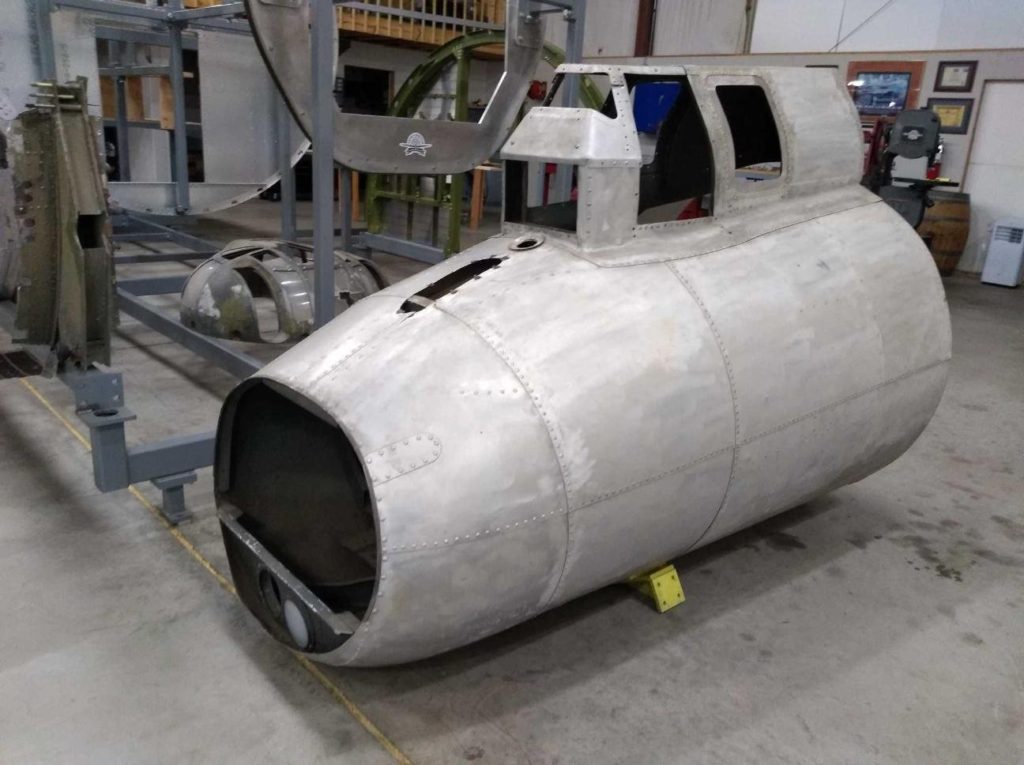
The newly arrived tail stinger assembly at the hangar.
Photo taken 30 May 2022.
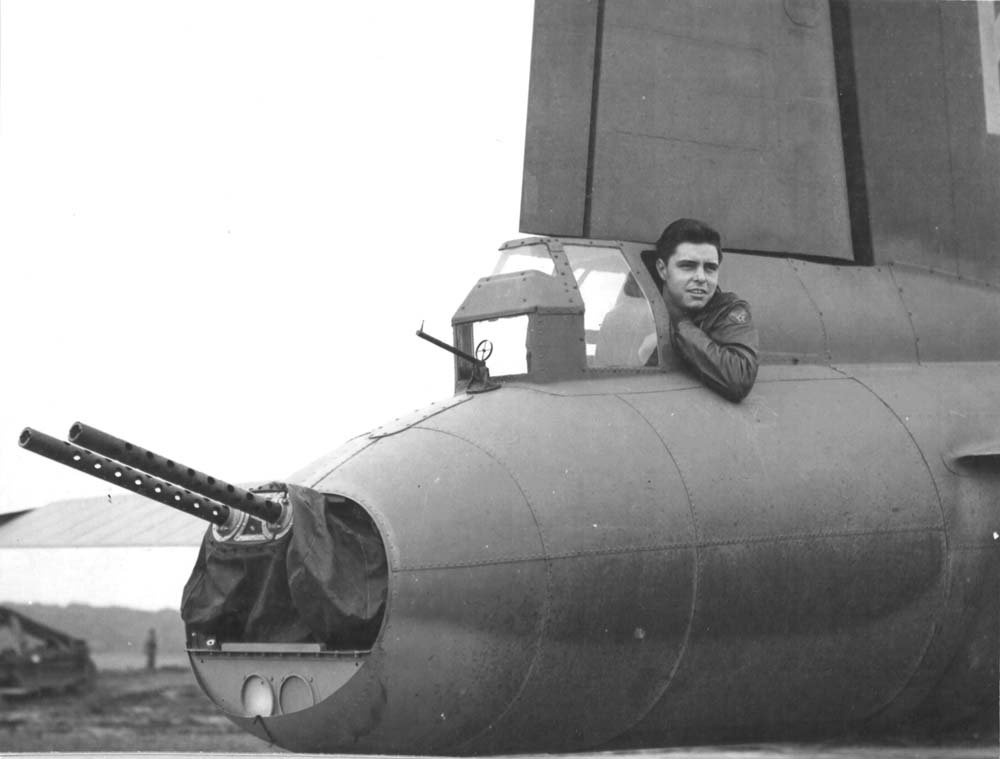
SSGT James F. Jones leans out the tail gun window of Gremlin Gus II (42-5904, 388BG). While the guns are still pointed upward for safety’s sake, the barrels have been removed for maintenance.
Gremlin Gus II crashlanded upon returning from a strike on 16 September 1943. The bomber was repaired for use in Project APHRODITE, being converted into a radio-controlled bomb. APHRODITE was cancelled before Gremlin Gus II could participate and she was scrapped at war’s end.
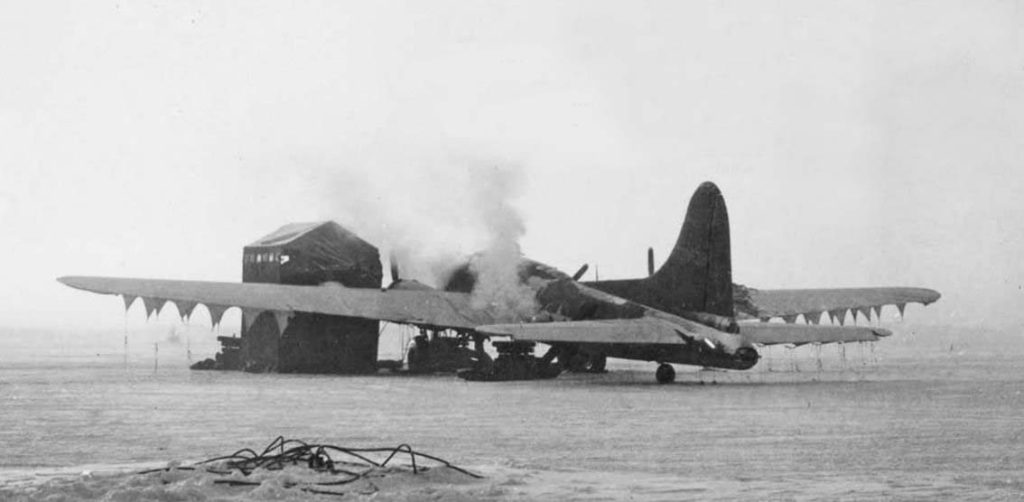
An unidentified B-17F undergoes maintenance on her no. 1 engine at Ladd AAB.
42-30681’s record card states that she received winterization maintenance from arrival to Ladd to 15 September – a lengthy and difficult process. She cost the US taxpayer 316,426 USD (some 5.3 million USD when adjusted for inflation).
Note the fog caused by the ground crew’s heaters, as well as the tarps tied over the wings to protect them from frost.
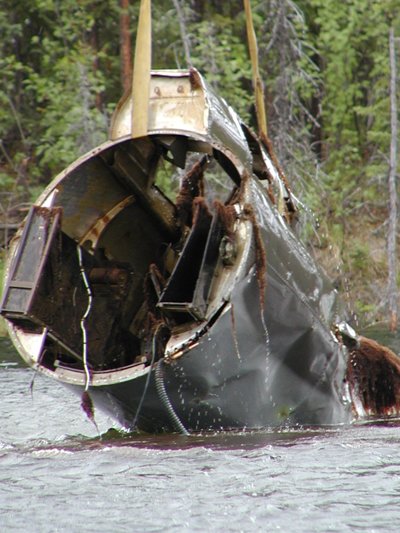
The original recovery of this stinger assembly. Note the wooden ammunition boxes.
Photo taken 13 June 2001.
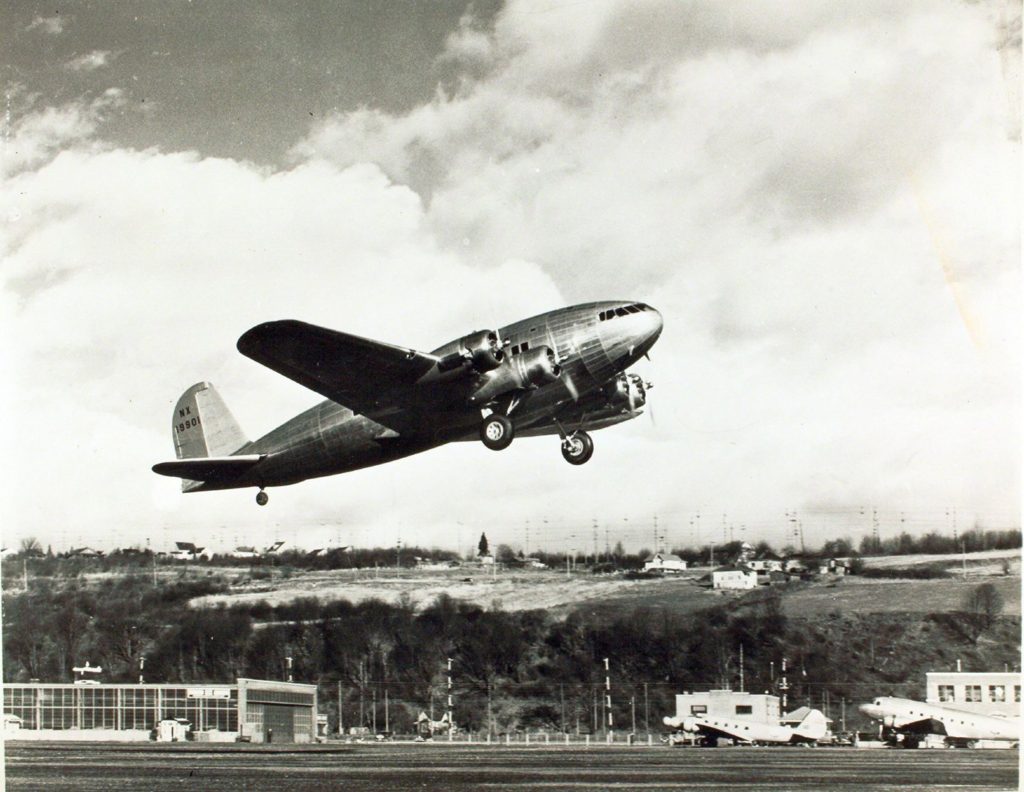
The prototype Boeing 307 Stratoliner takes to the air.
Note the prewar “shark fin” tail.
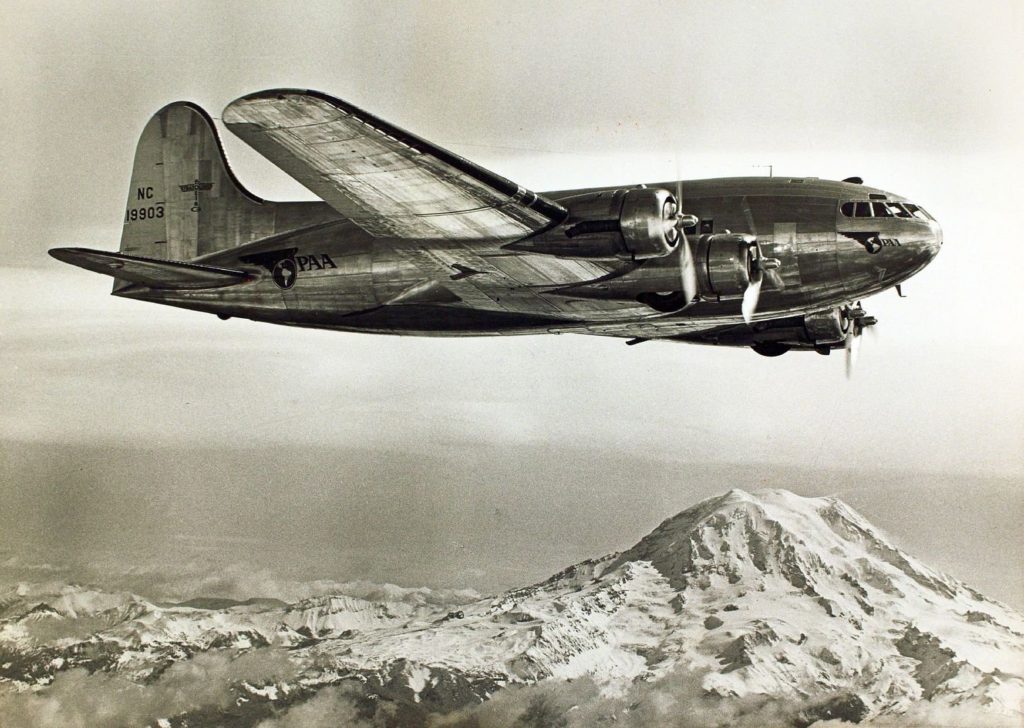
The redesigned Boeing Stratoliner with the enlarged tail.
The Stratoliner was a revolutionary design that was plagued by bad timing. Only one survives today, being on display at the Smithsonian Udvar-Hazy Center in Washington, DC.
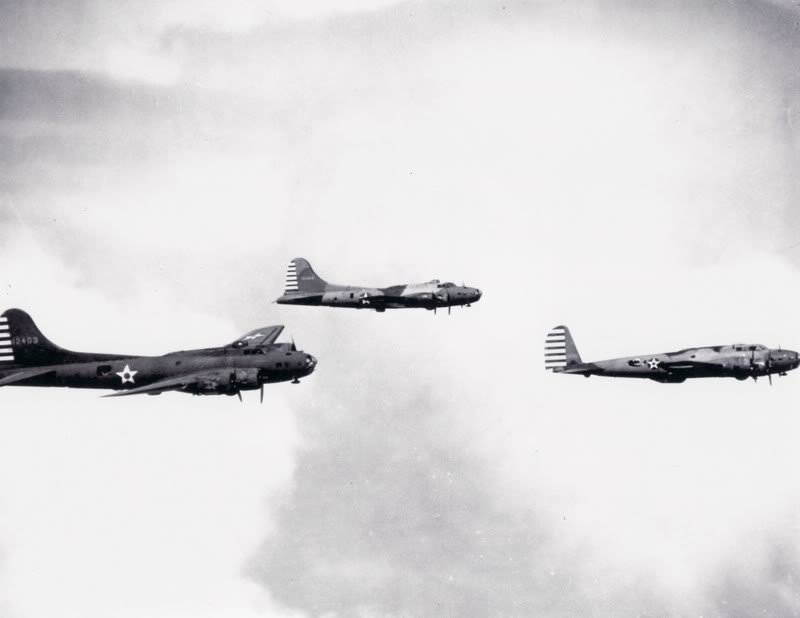
The drastic difference in tail design can be with the B-17C flying lead and the B-17Es behind.
Two of these aircraft are painted in a camouflage known historically as the ‘Hawaiian Air Depot scheme.’ This short-lived practice was applied to 7AF B-17s in the immediate aftermath of the attack on Pearl Harbor.

The newly arrived tail stinger assembly at the hangar.
Photo taken 30 May 2022.
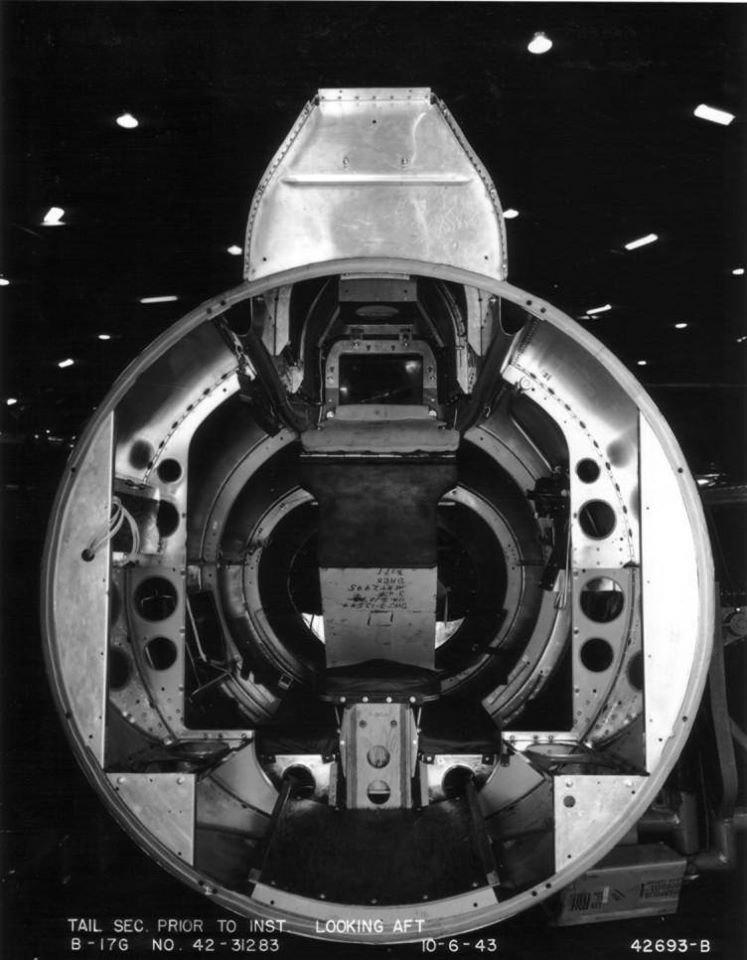
The tail gun position of 42-31283, a B-17F that never left the states. The ammo boxes have not been installed yet, though you can see where they would later be located. The gunner sits on the bicycle seat, his knees on the padding and his chest against the armor plate.
Photo taken 10 June 1943.
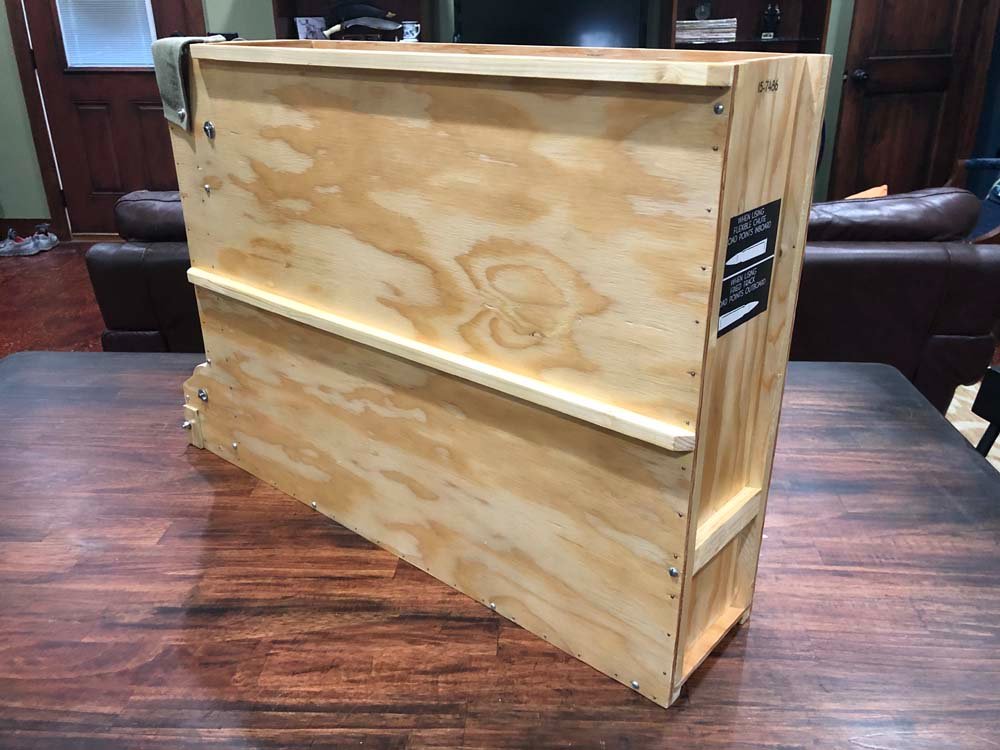

The finished right-hand tail gun ammo box on my dining table.
The ammo chutes which attach to the boxes will be problematic. Lengths of both right and left-hand chutes have to be mated so that the ammunition can reach the guns. While Hughes-type ammo chutes were once plentiful, the supply is rapidly drying up (particularly of left-hand chutes).
Photo taken 16 October 2020.
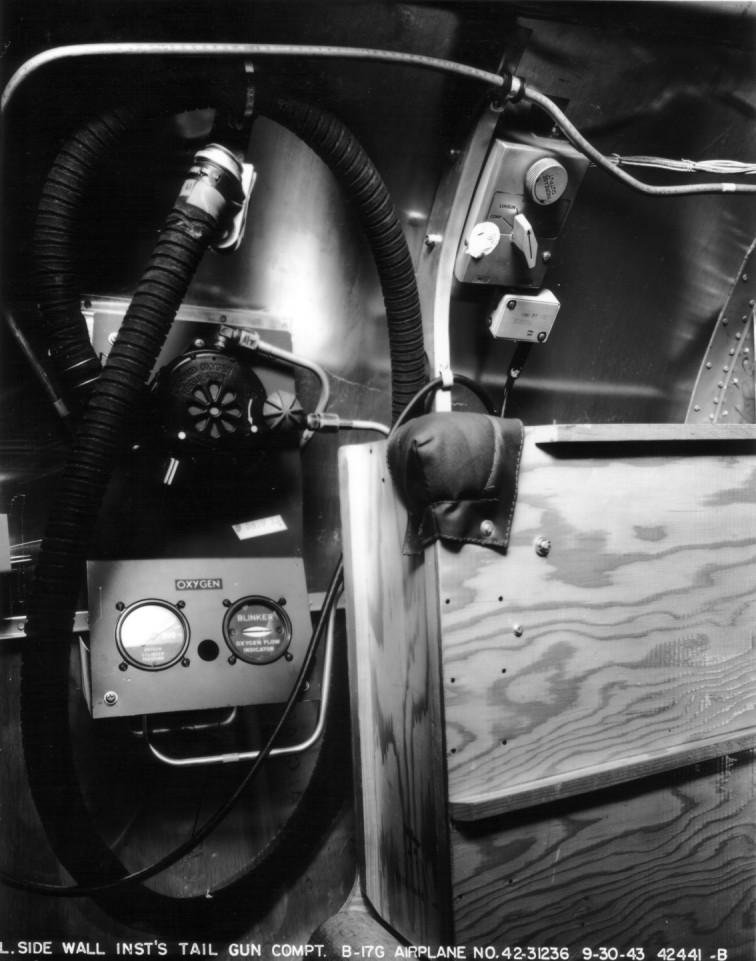
The right-hand ammo box in the tail of Arch Bishop (42-31236, 306BG). Due to the photo being black and white, it can be easy to mistake the corner pad for leather. It is not – it is canvas.
Note the small nails used to strengthen the wood panels, as period wood glue was notoriously poor.
Arch Bishop was lost on 11 January 1944 when another aircraft in her formation, Norah (42-31538, 306BG), lost control and collided with the bomber over Holland. There were no survivors.
Photo taken 30 September 1943.
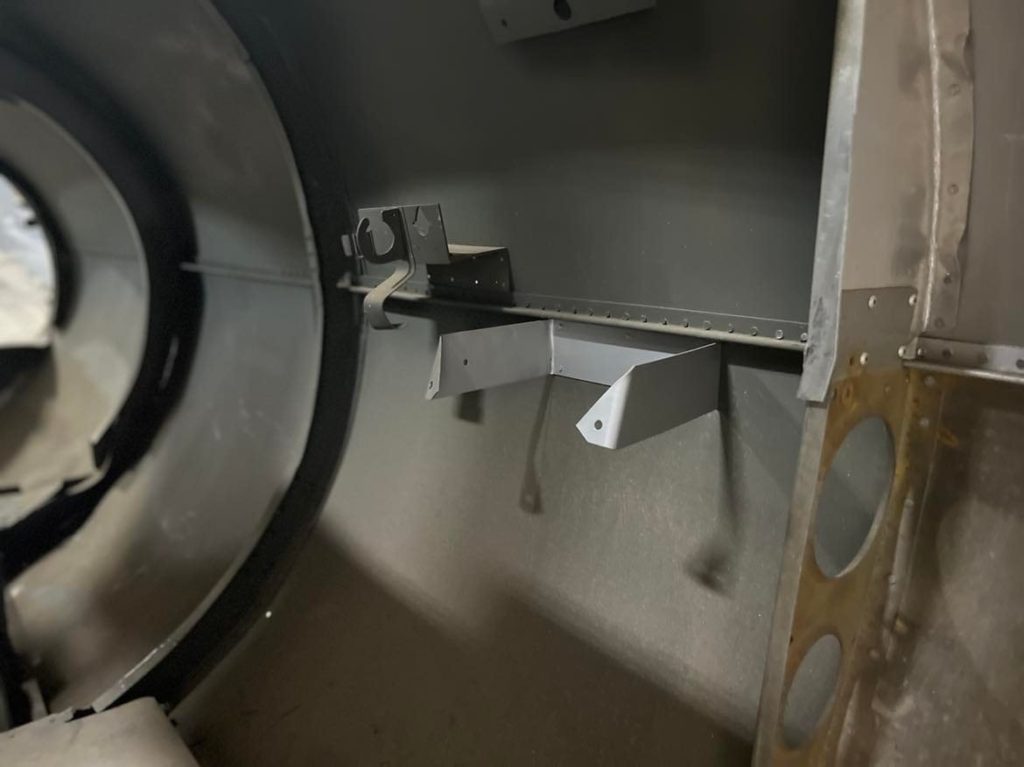
The right side of the stinger assembly which will go toward Lucky Thirteen.
The horseshoe-like bracing holds the gunner’s oxygen panel. The hook to the left holds the gunner’s mic and headset cords. The upper part of the rightmost rib has been replaced by one of the stinger’s previous owners, though this area originally held the gunner’s intercom jackbox.
Photo taken 9 June 2022.
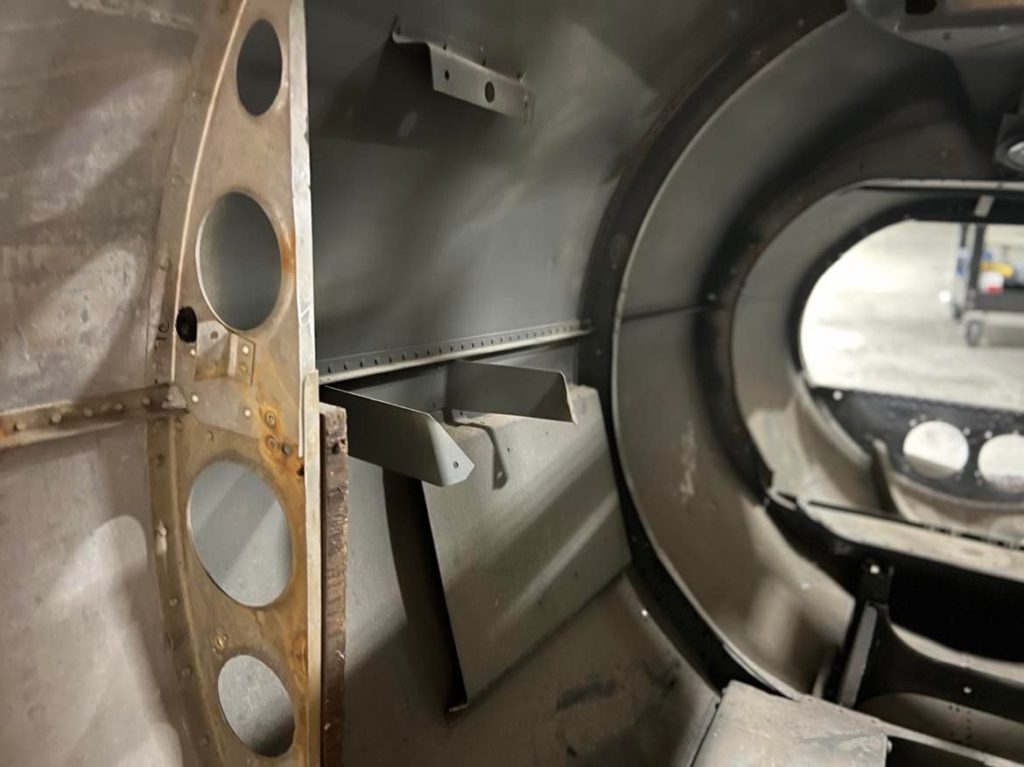
The left side of the stinger assembly which will go toward Lucky Thirteen.
The large flat pan, originally lined with asbestos, held the tail gunner’s heated-suit rheostat. The bracing above is for a secondary oxygen panel.
The tail gunner had the unique distinction of having a pair of oxygen lines run to his station – a redundancy ensuring that his position was always manned.
Photo taken 9 June 2022.
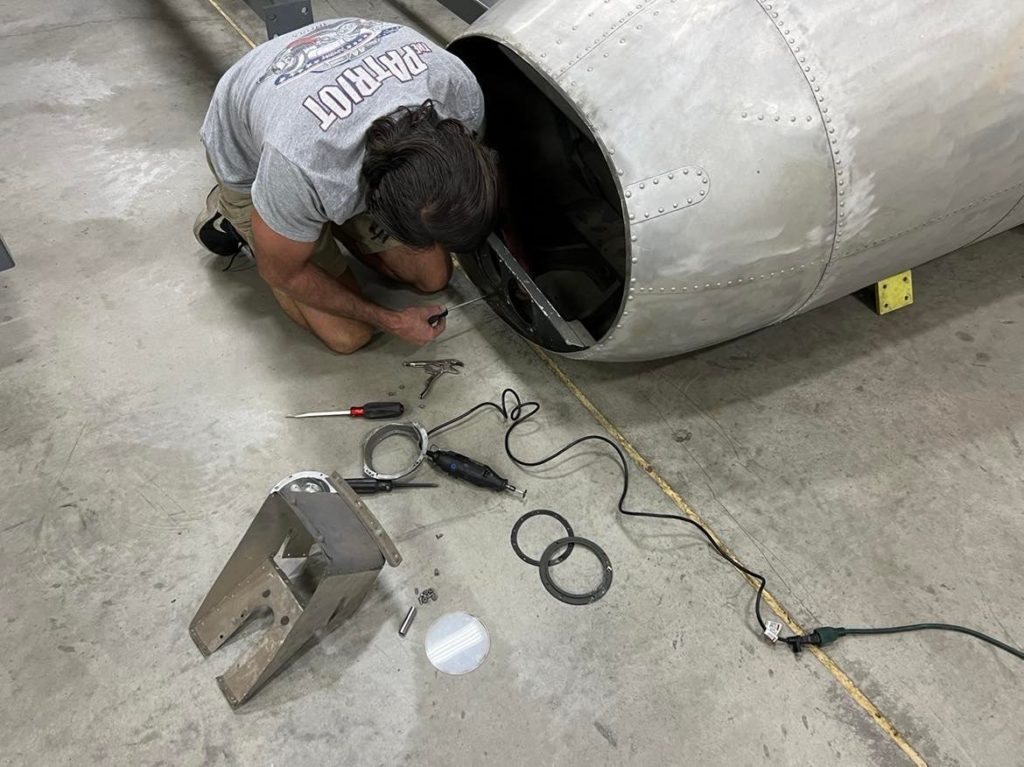
Ray removes the light found on the stinger. The light that was there was inaccurate and added by one of her previous owners. The two lights below the guns were used during the bomb run: white for “ready” and red for “drop.”
The box-shaped piece you see below is the hopper for feeding spent shells out below the stinger.
Photo taken 9 June 2022.
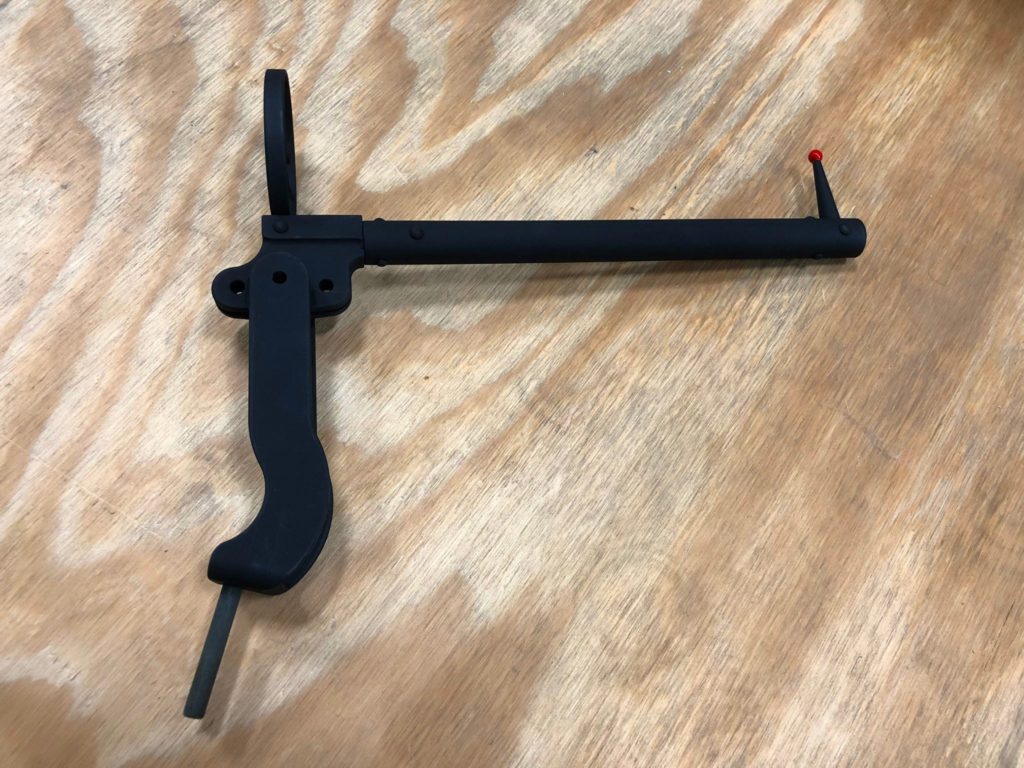
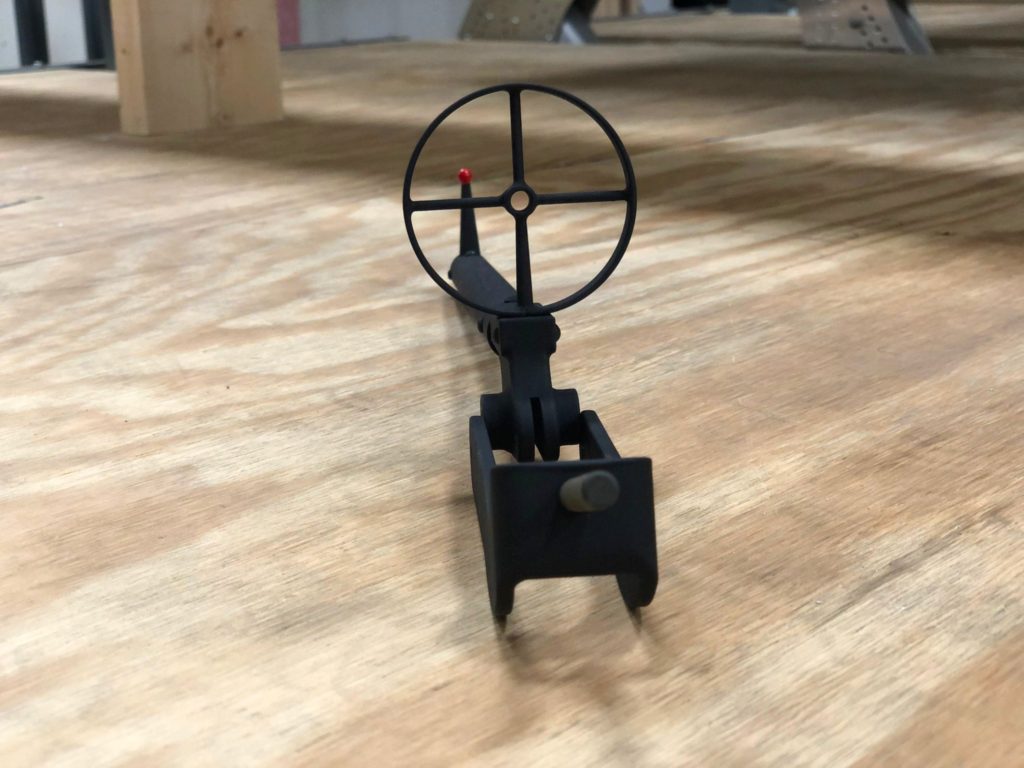
The finished ring-and-bead sight for the tail gun on “Lucky Thirteen.”
Photo taken 27 October 2019.
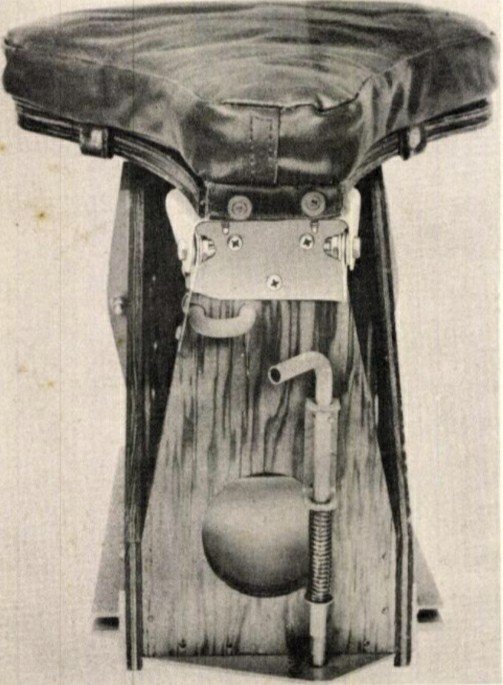
Manual illustration of the tail gunner’s seat assembly.
Fabrication of this largely-wooden assembly can commence once the metal components are complete.
The seat could be adjusted by sliding it on a pair of rails, using a spring lever (center) to hold it in place. Another spring lever (slightly above) adjusted the angle of the pad.

My wife Megan attempted to sew the seat pad by hand but the canvas was far too thick for said method.
Mark Lewis – who made the correct sheath for the crash axe – kindly offered to finish out the seat assembly. With his extensive experience and stocked workshop, this sort of work is his specialty.
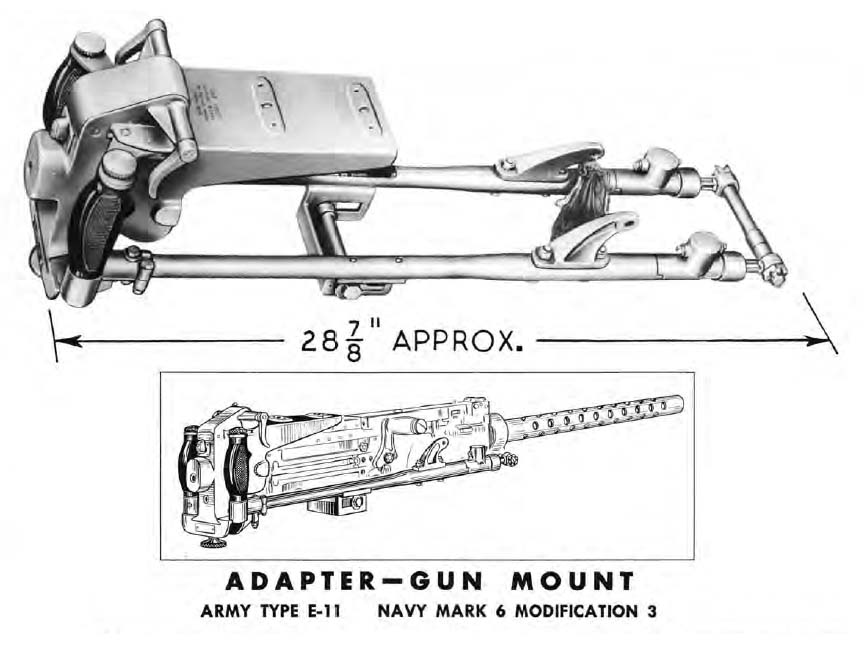
A manual illustration of a Type E-11 Gun Cradle.
Lucky Thirteen originally carried five of these, two of which were used by the tail gunner. Gun cradles are quite difficult to acquire because the collectors market has elevated their prices to extreme levels. Finding a complete set for the B-17F will not be easy.
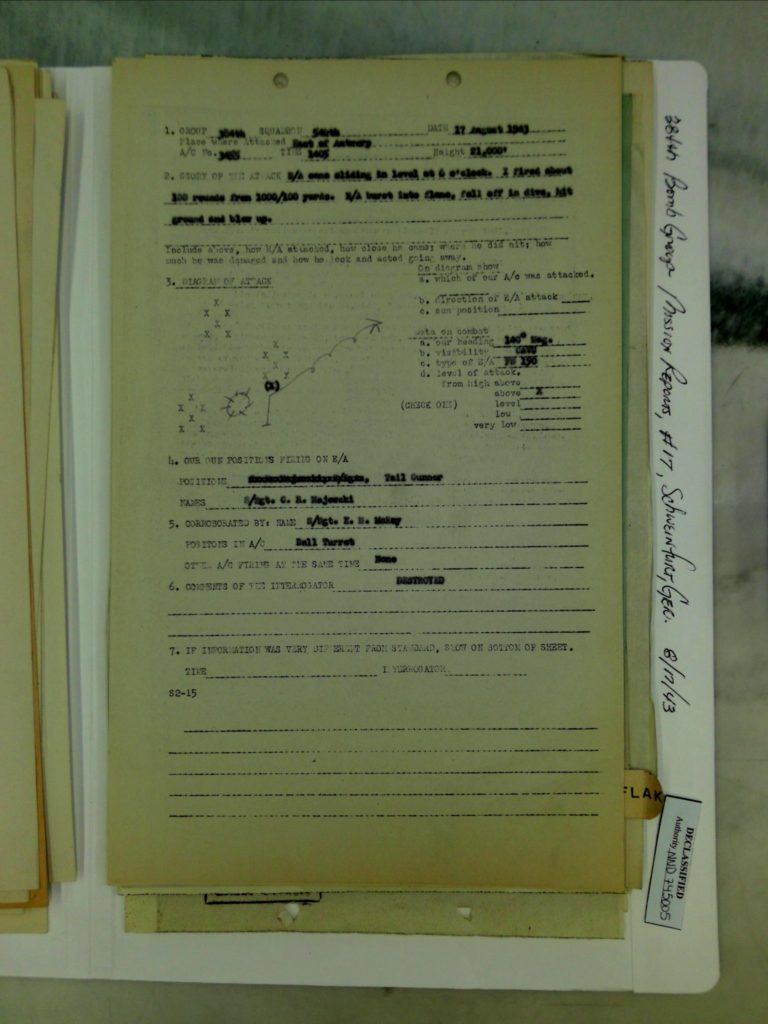
Lucky Thirteen actually has a combat victory credited to her tail.
On 17 August 1943, over Schweinfurt, SSGT Casmer R. Majewski was credited with downing a German interceptor.
Majewski was not a member of the crew usually assigned to Lucky Thirteen, instead normally flying with Battle Wagon (42-30026, 384BG). That said, Lucky Thirteen‘s normal tail gunner, SSGT William H. Ross, also claimed a kill that day flying aboard Barrel House Bessie (42-5051).
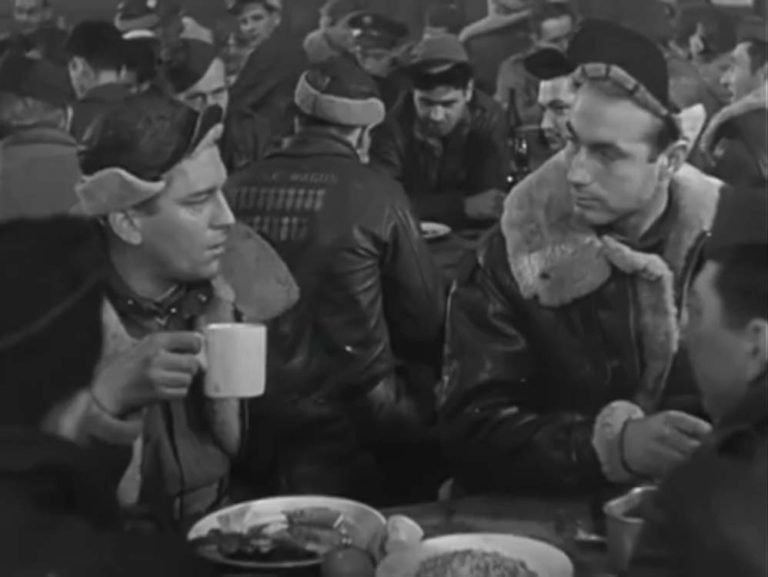
SSGT Casmer R. Majewski appears in the documentary Target For Today roughly around the 29:40 minute mark.
Majewski teases the others by referring to the “two Jerries I slapped down over Schweinfurt,” though records only confirm a single kill by Majewski that day.
Target for Today was an attempt by the Army to break down the operations of a typical US 8AF strike. The film follows the planning and execution of the 9 October 1943 bombing of Anklam, Malbork, and Gdansk, Germany and Gdynia, Poland.
This donation comes to us via Aaron Moore, who purchased it for us on Facebook. A listing had been created to sell this piece and Aaron saw our comment asking about it. Aaron – who is currently active-duty USAF – purchased it with the sole intent of donating it to the project.
We were floored. Thank you, Aaron!
This piece is one of two of the B-17’s Familiarization Manuals.
The Familiarization Manuals were a common item on F-model B-17s, each aircraft coming with a pair – one for Operations and one for Maintenance. The Operations manual was rather thin and kept on a chain behind the pilot’s seat. The Maintenance Manual was a tad different. Nearly 800 pages in length, the Maintenance Manual was perhaps the most all-encompassing piece of literature one could ask for on the B-17.
In our quest to rebuild Lucky Thirteen to the highest standards of accuracy possible, we have endeavored to locate the various manuals one might have found onboard. So far, along with the Maintenance Familiarization manual, we have acquired the Information Files for the Bombardier, Navigator, Pilot, and Aerial Gunner. Planned manuals for the future include the Operations Familiarization Manual, the B-17 Flight Training Manual, the Field Service Manual, the Familiarization and Inspection Manual, and the Radio Operator’s Information File.
Scans of the various manuals we have acquired thus far can be found on the Library page. We do not require payment to download any of these documents. We simply ask that visitors who use our library consider donating to Hangar Thirteen to show your appreciation in scanning these records for the sake of posterity.
Aaron’s donation is quite rare and a treasured addition to the project – thank you so much!

Aaron’s newly donated B-17F Maintenance Familiarization Manual.
Photo taken 9 July 2022.
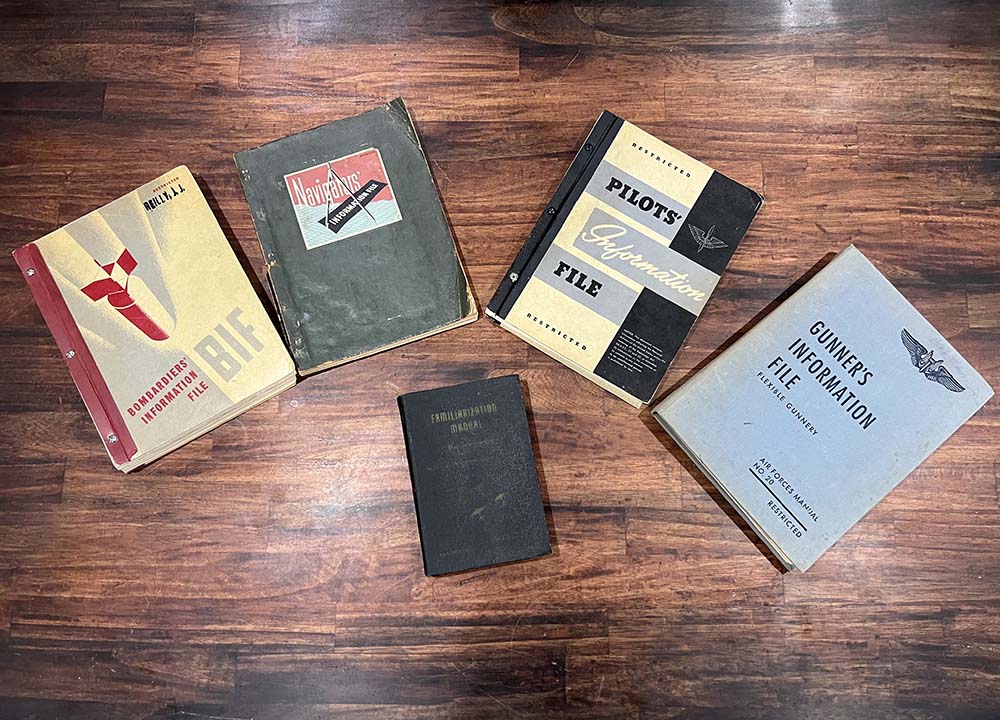
Our progress gathering manuals for Lucky Thirteen thus far. From left to right are the Bombardier’s Information File, the Navigator’s Information File, the Pilot’s Information File, and the Gunner’s Information File. Center is the Boeing B-17F Maintenance Familiarization Manual.
Still needed are the Boeing B-17F Operations Familiarization Manual, Boeing B-17 Flight Training Manual, Boeing B-17 Field Service Manual, and the Radio Operator’s Information File.
Photo taken 9 July 2022.
The ribs to Station 5 (the front wall of the radio room/back wall of the bomb bay) have been dipped in zinc chromate.
For those who don’t remember, aircraft manufacturers used various practices to prevent corrosion caused by differing metals. Douglas (who built Lucky Thirteen) used one of the more common methods: they dipped the ribs in zinc chromate, leaving the skins bare.
Zinc is naturally resistant to corrosion, making it an ideal barrier. By mixing this compound with black pigment, the finished result can be anywhere between a yellow and avocado green color (depending on mixture). It should not, however, be confused with ordinary paint. Zinc chromate was a common practice in mid-20th Century US manufacturing, and chances are that you have been around ZC pieces more than you might realize. I grew up with an ironing board finished this way!
Viewing original wreckage, we discovered that Douglas dipped their ZC pieces. So, we have worked to replicate this effect. When dry, it will have a smooth, almost glass finish, though to be safe we will give it about a month to cure.
But man, it is going to be awesome to see it fully riveted together with those period-ALCLAD marked skins.

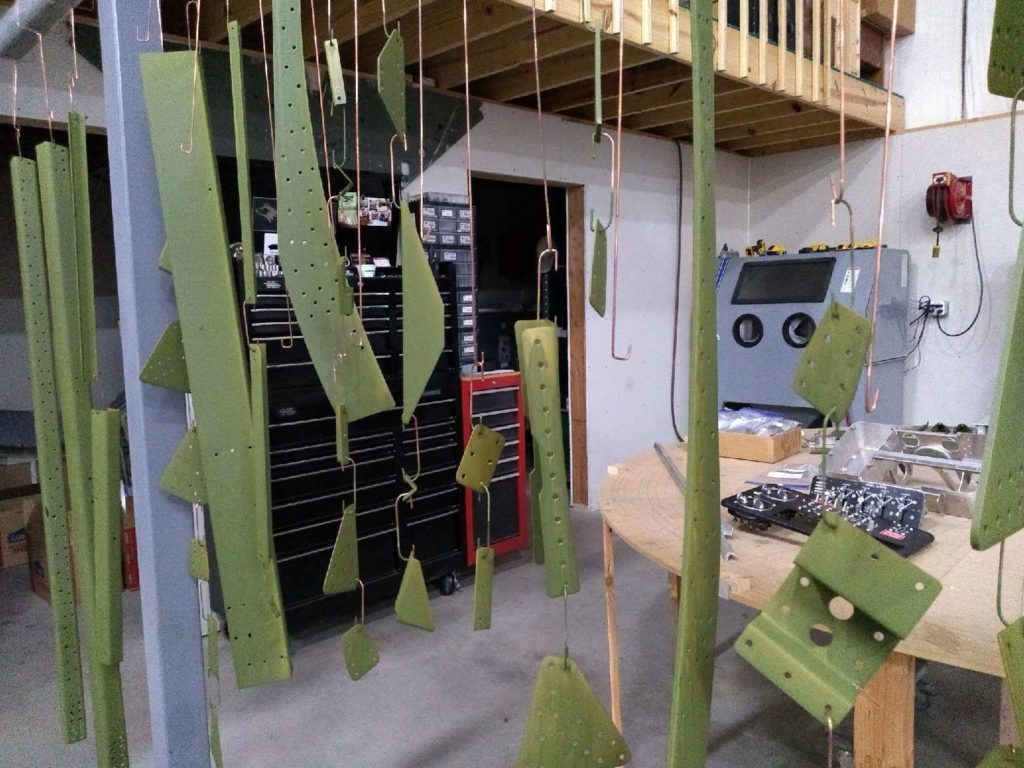
The ribs to Station 5 have been dipped in Zinc Chromate and are now drying on the rack.
Photo taken 18 May 2022.

Note the characteristic running in the color caused by dipping the piece rather than spraying.
When dry, it will be smooth, but retain the unique color pattern.
Photo taken 18 May 2022.
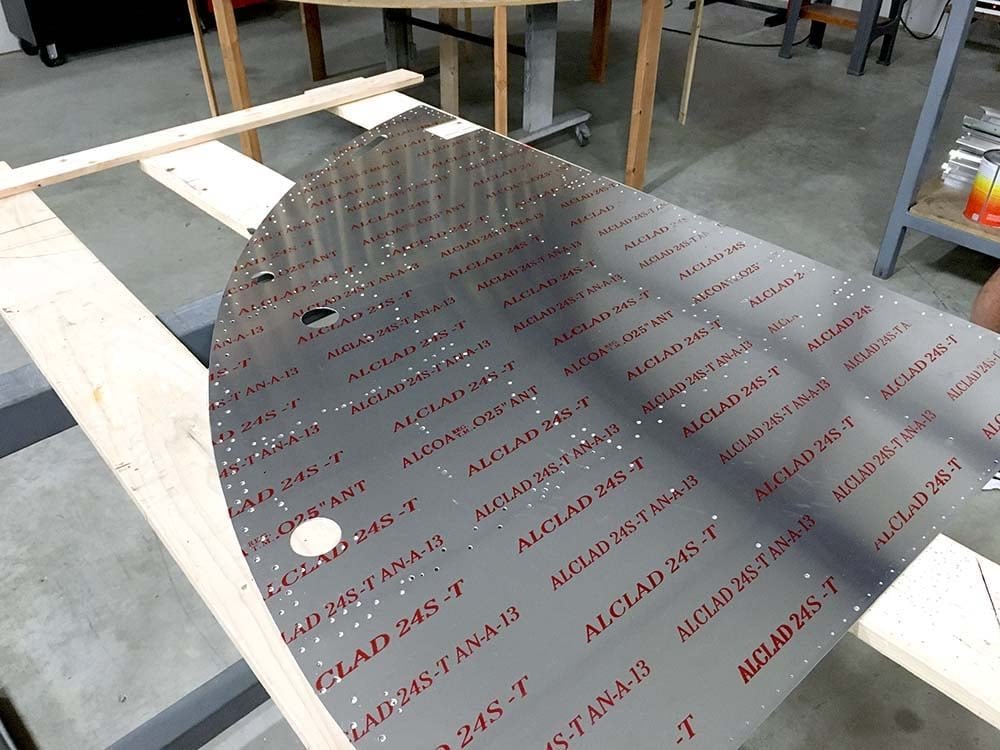
The ALCLAD markings applied to one of the two Station 5 skins.
Photo taken 2 November 2021.
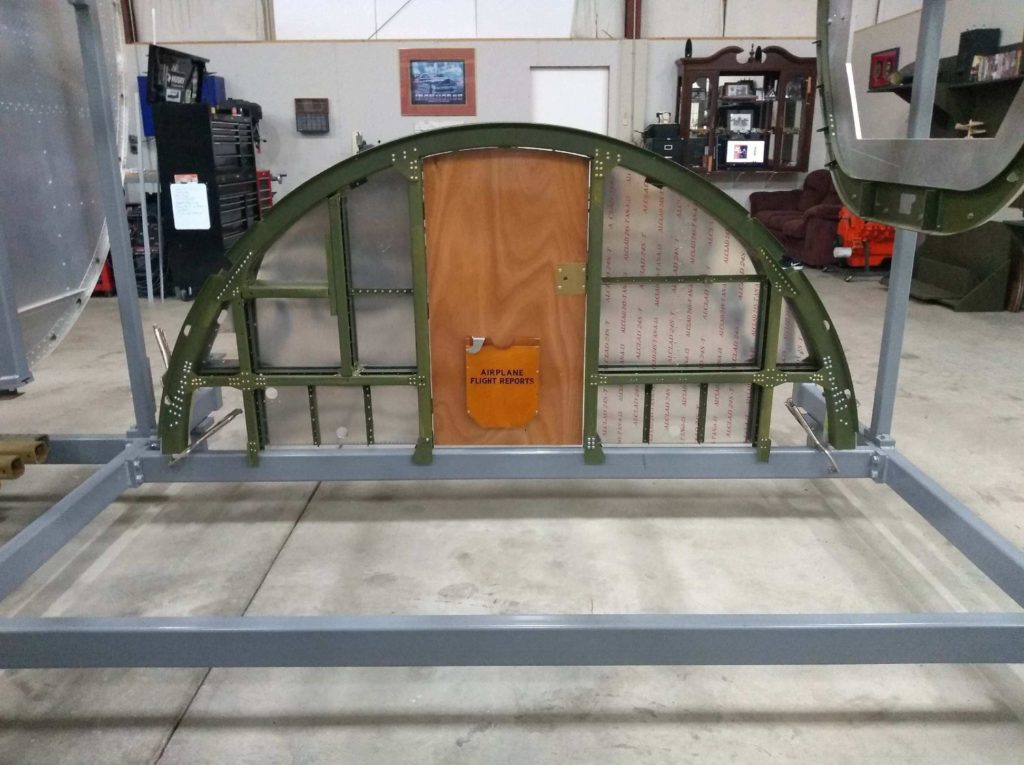
As an example of the finished effect – Station 4 (the back wall of the cockpit/front wall of the bomb bay) after its completion.
Photo taken 15 June 2020
